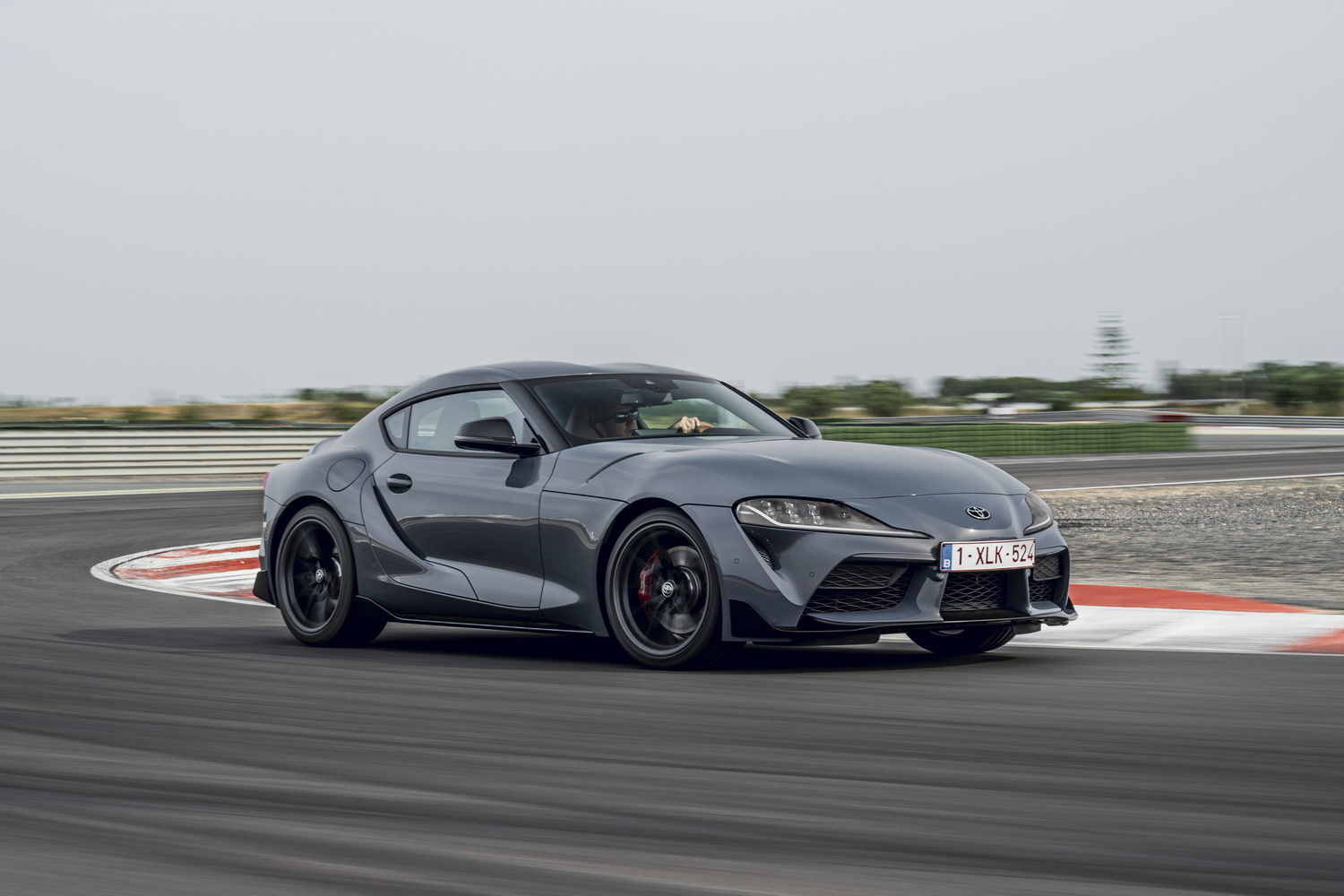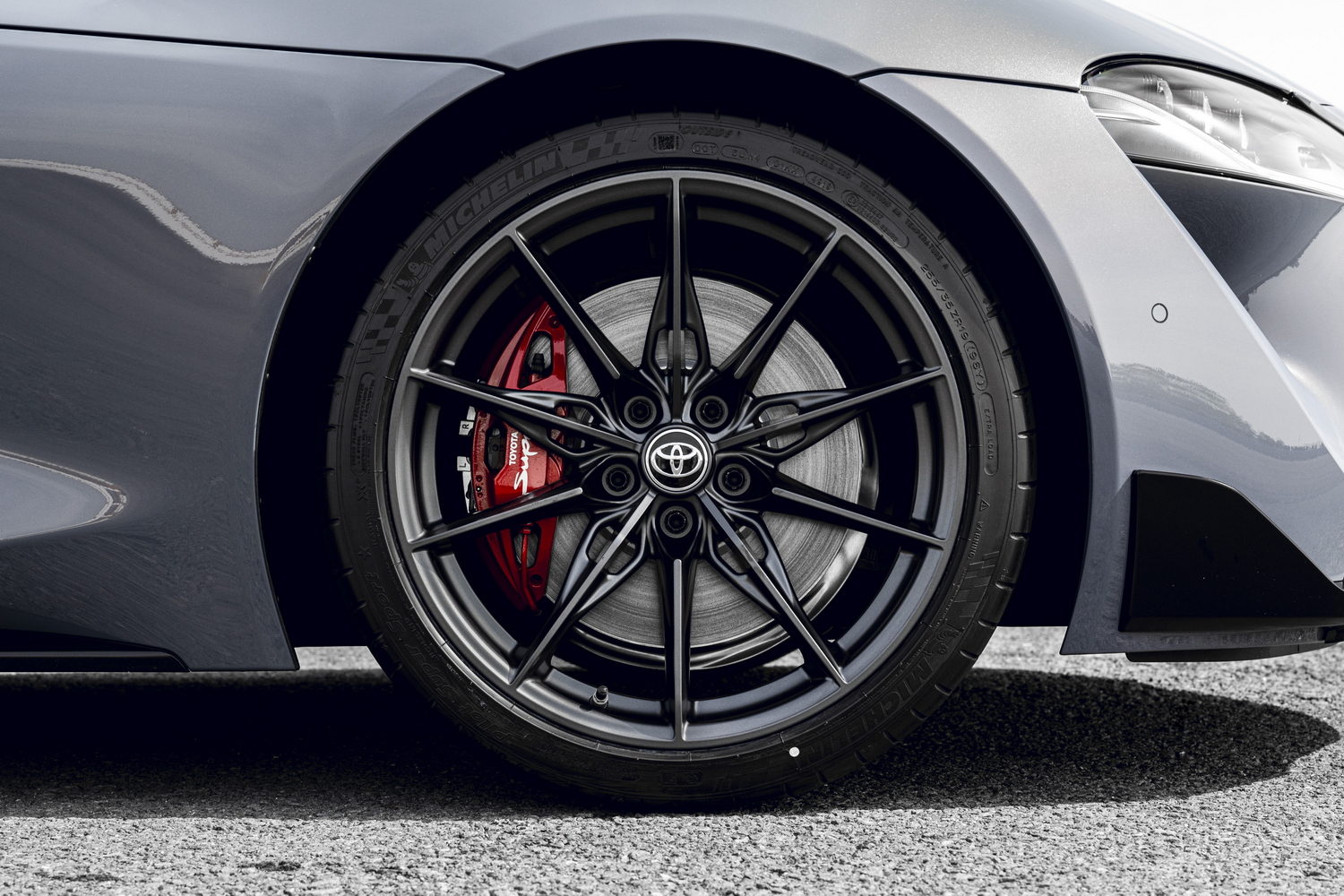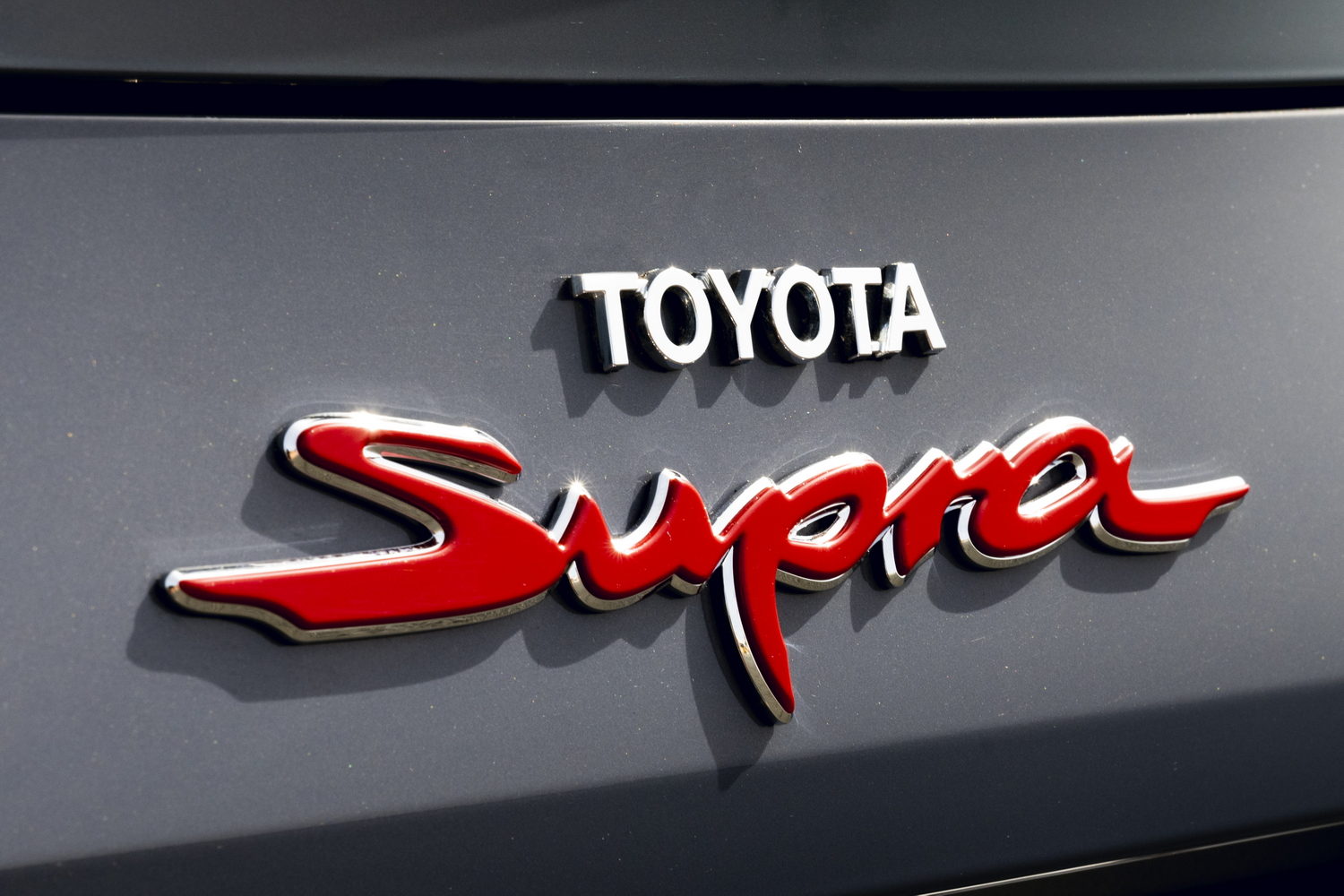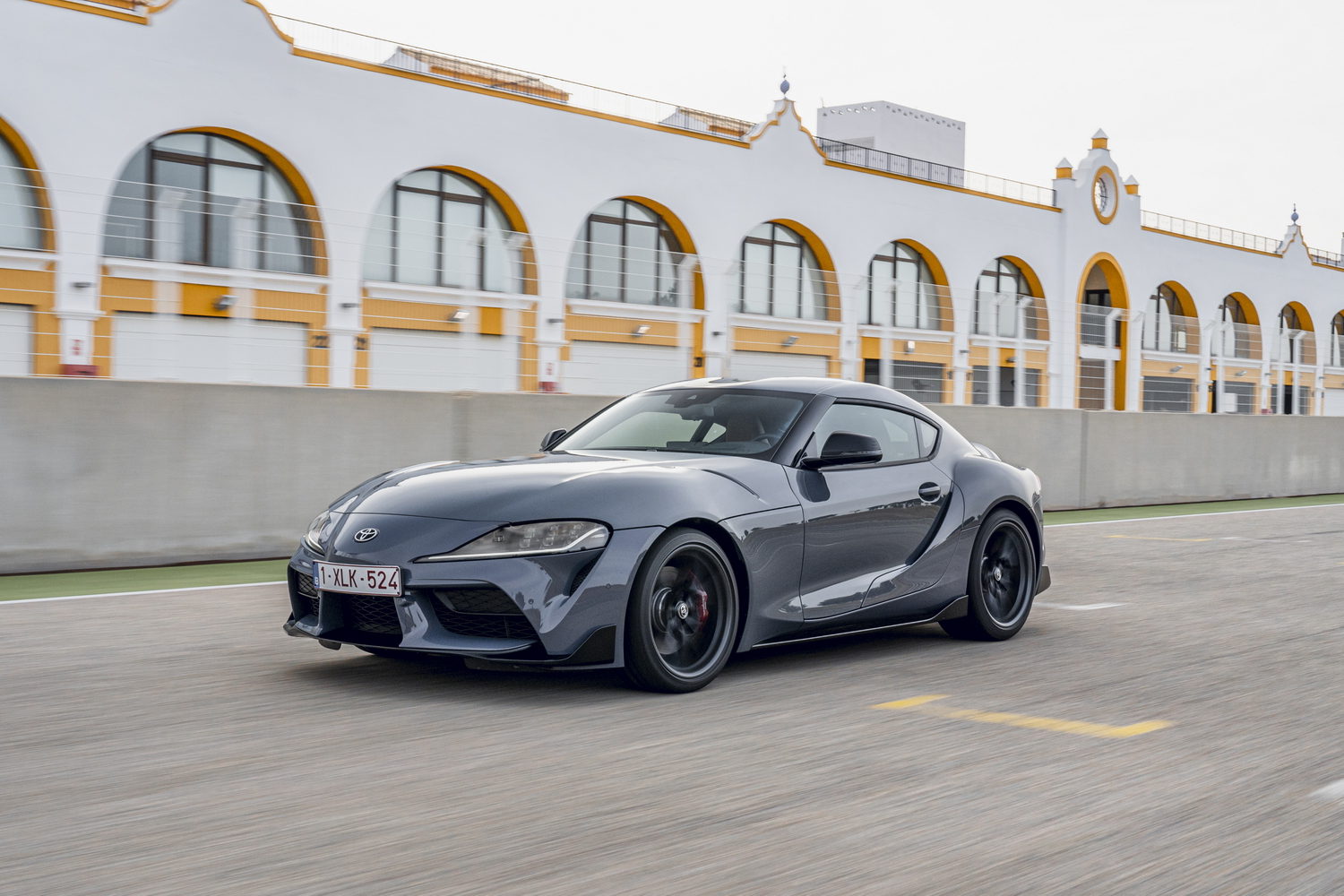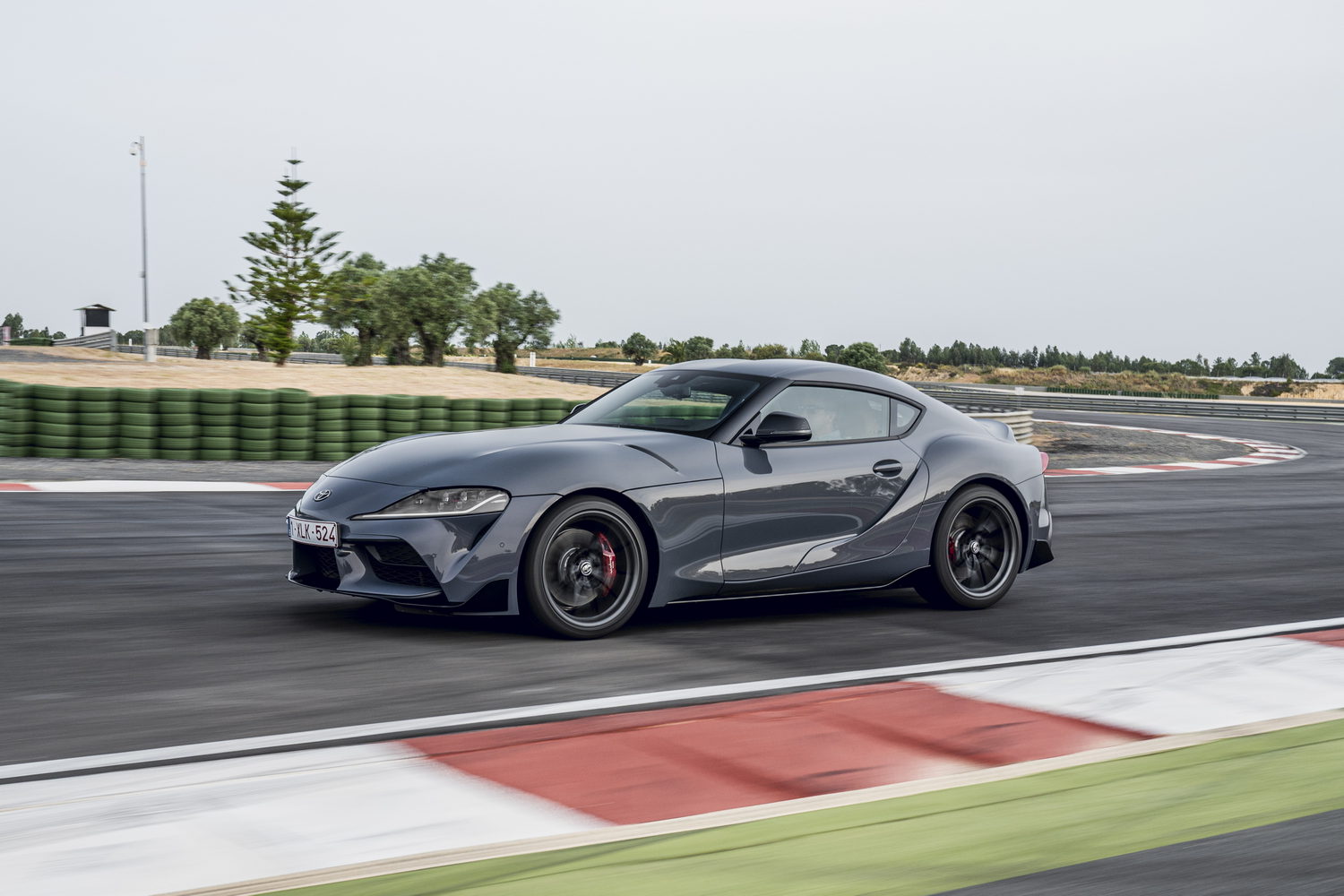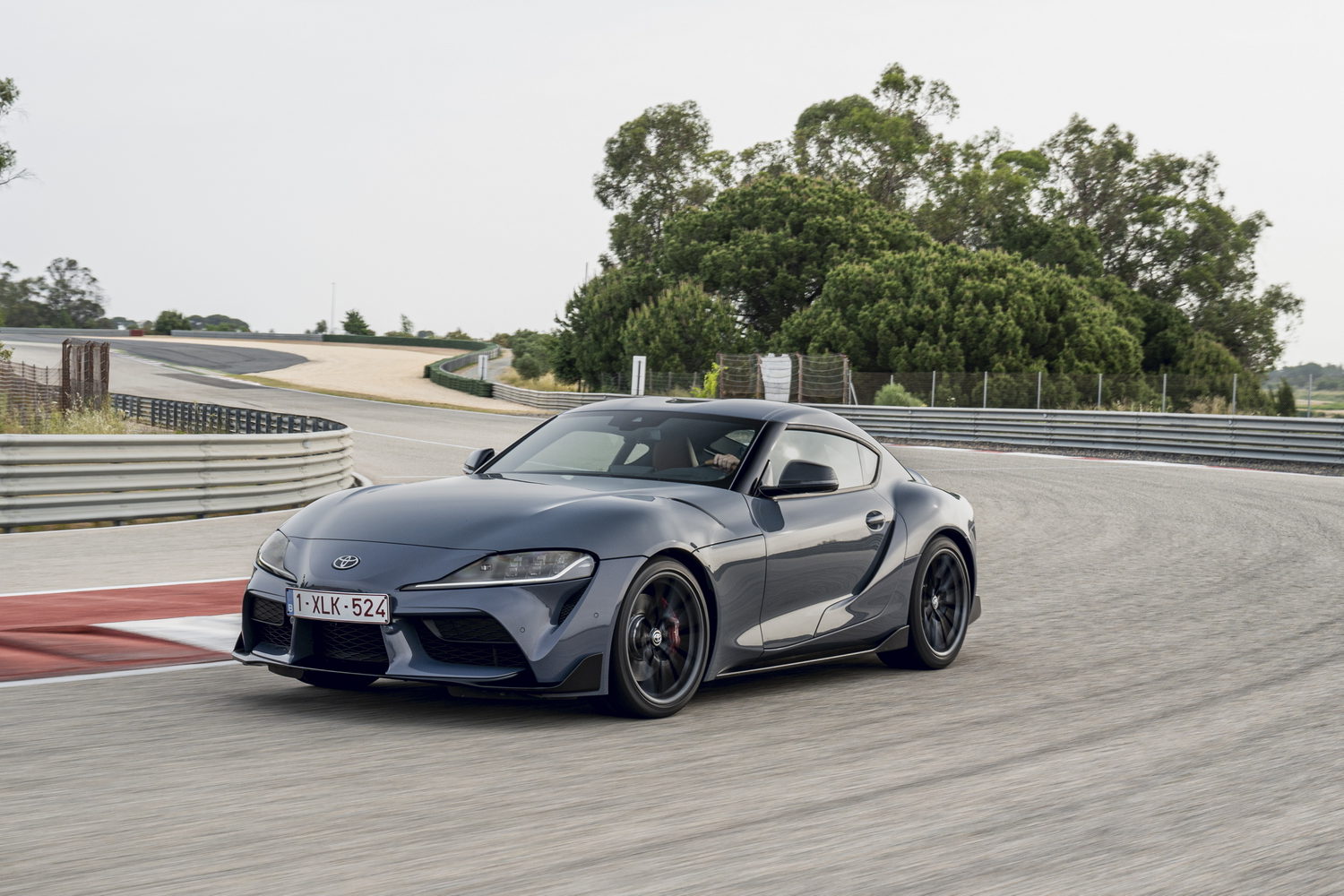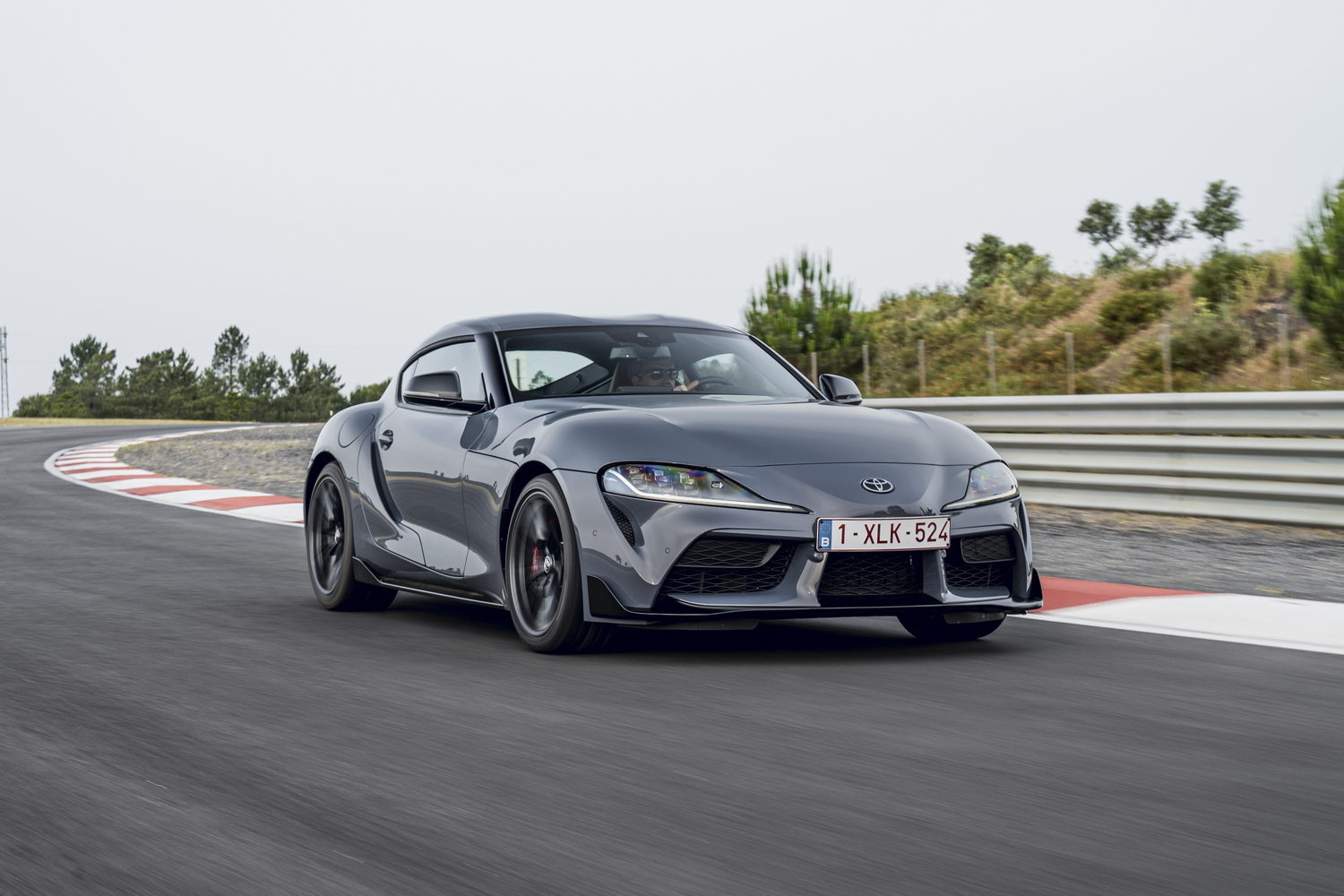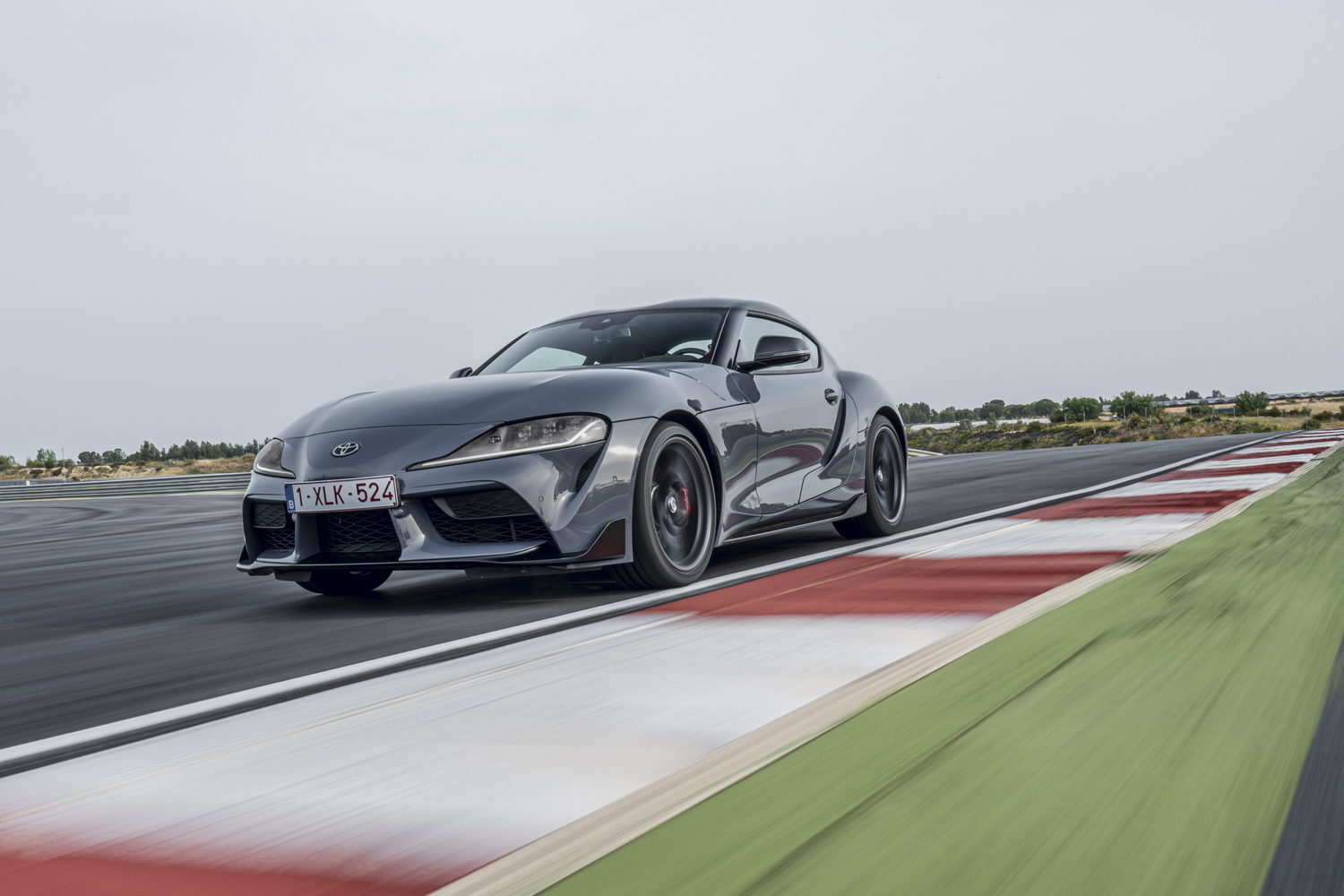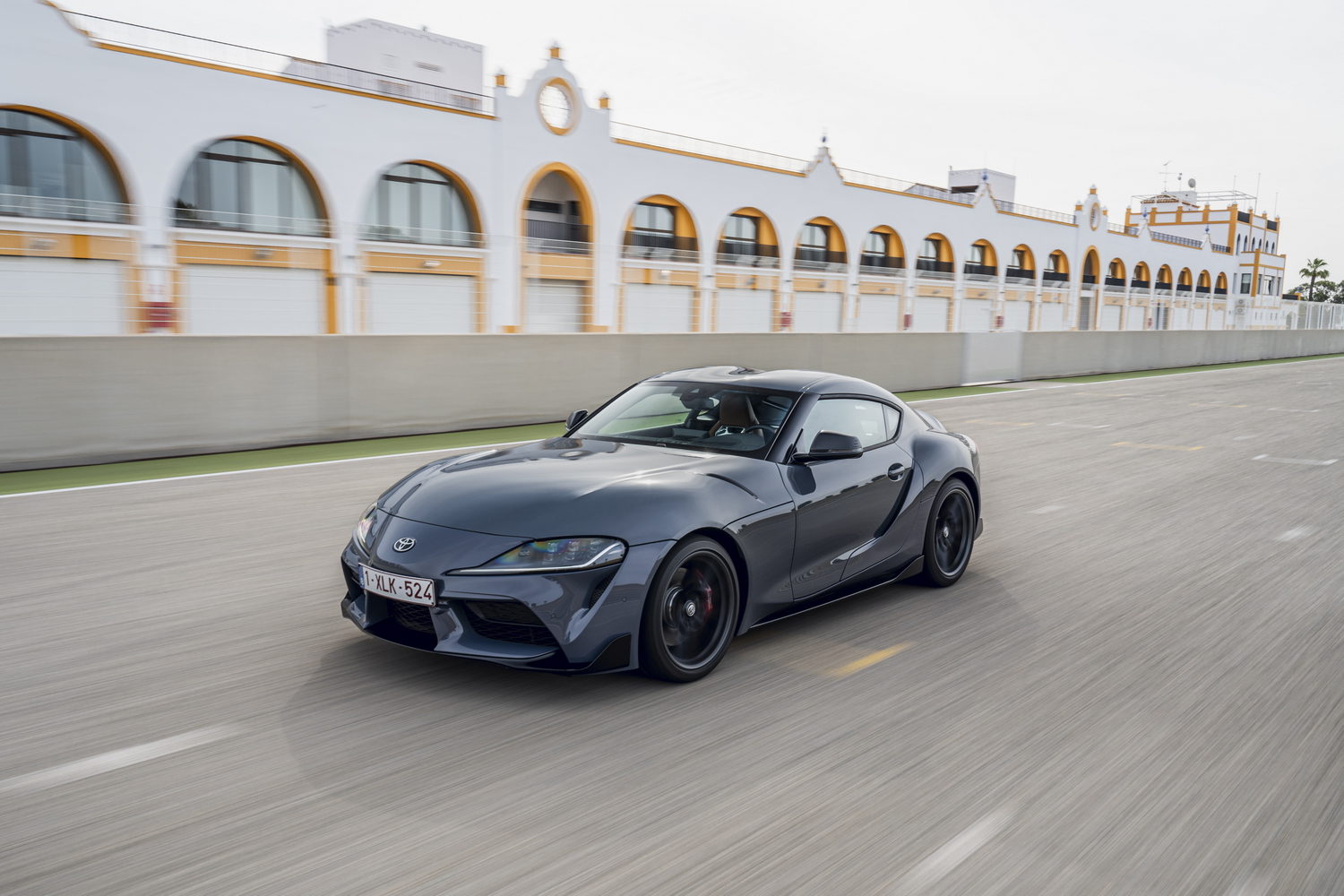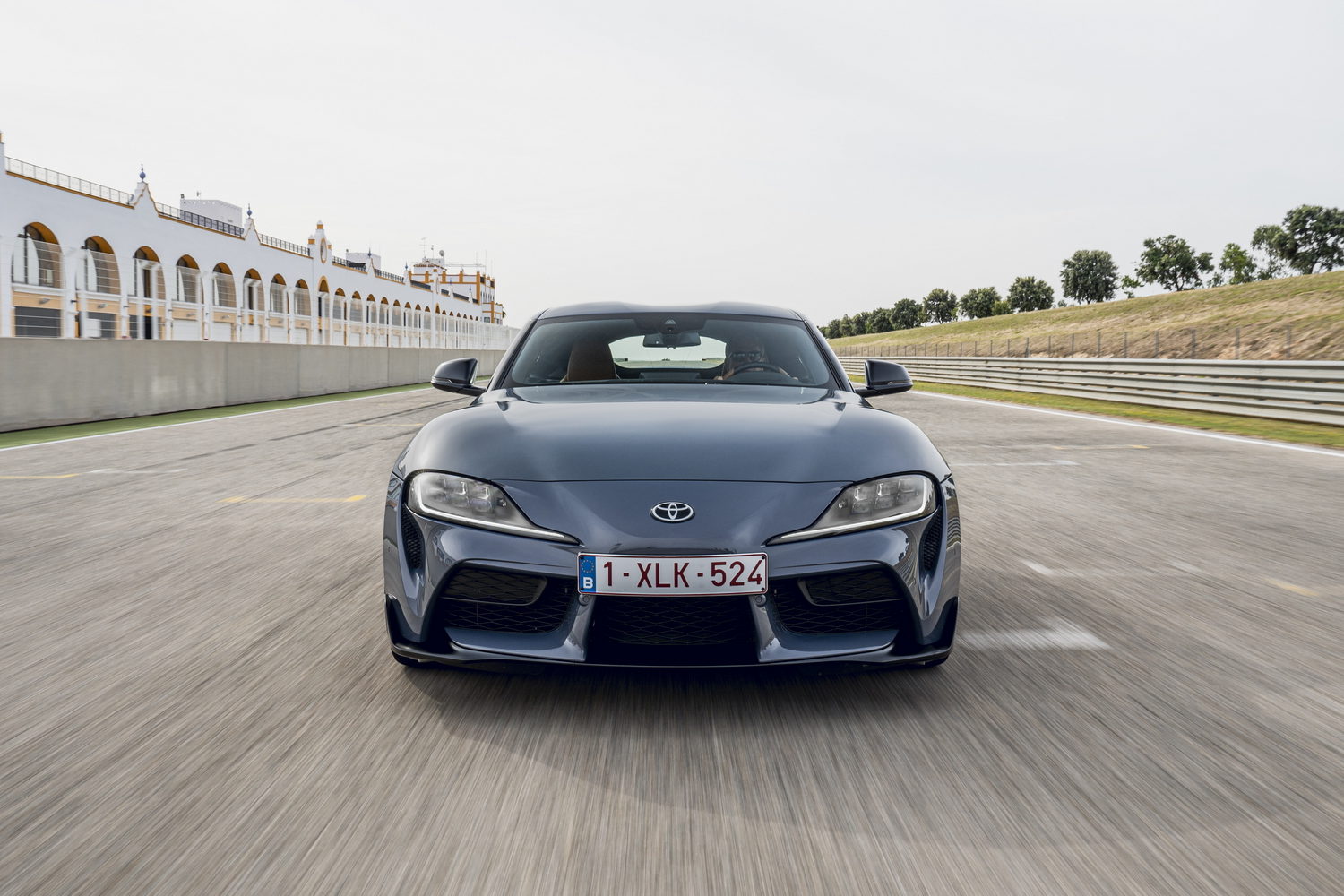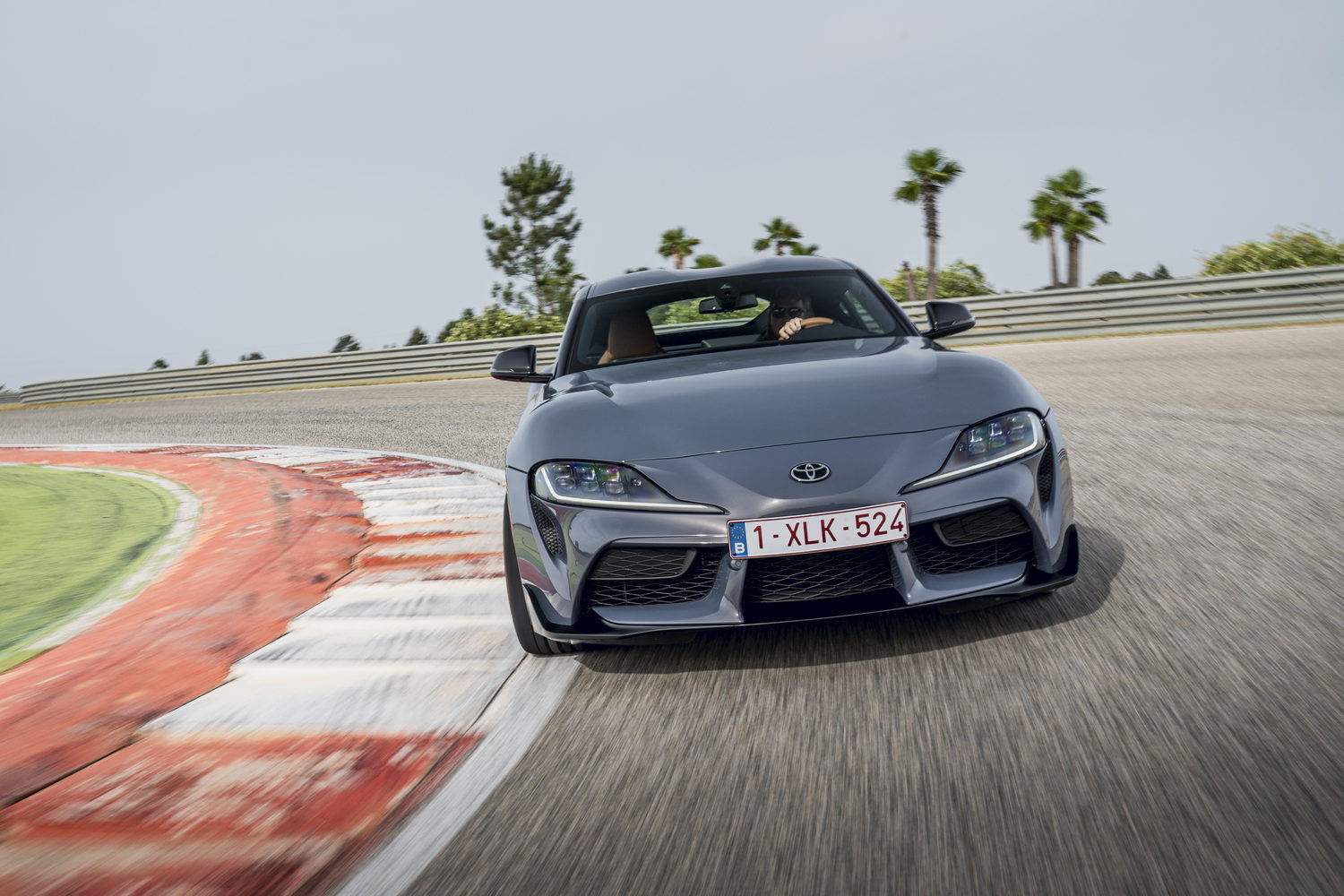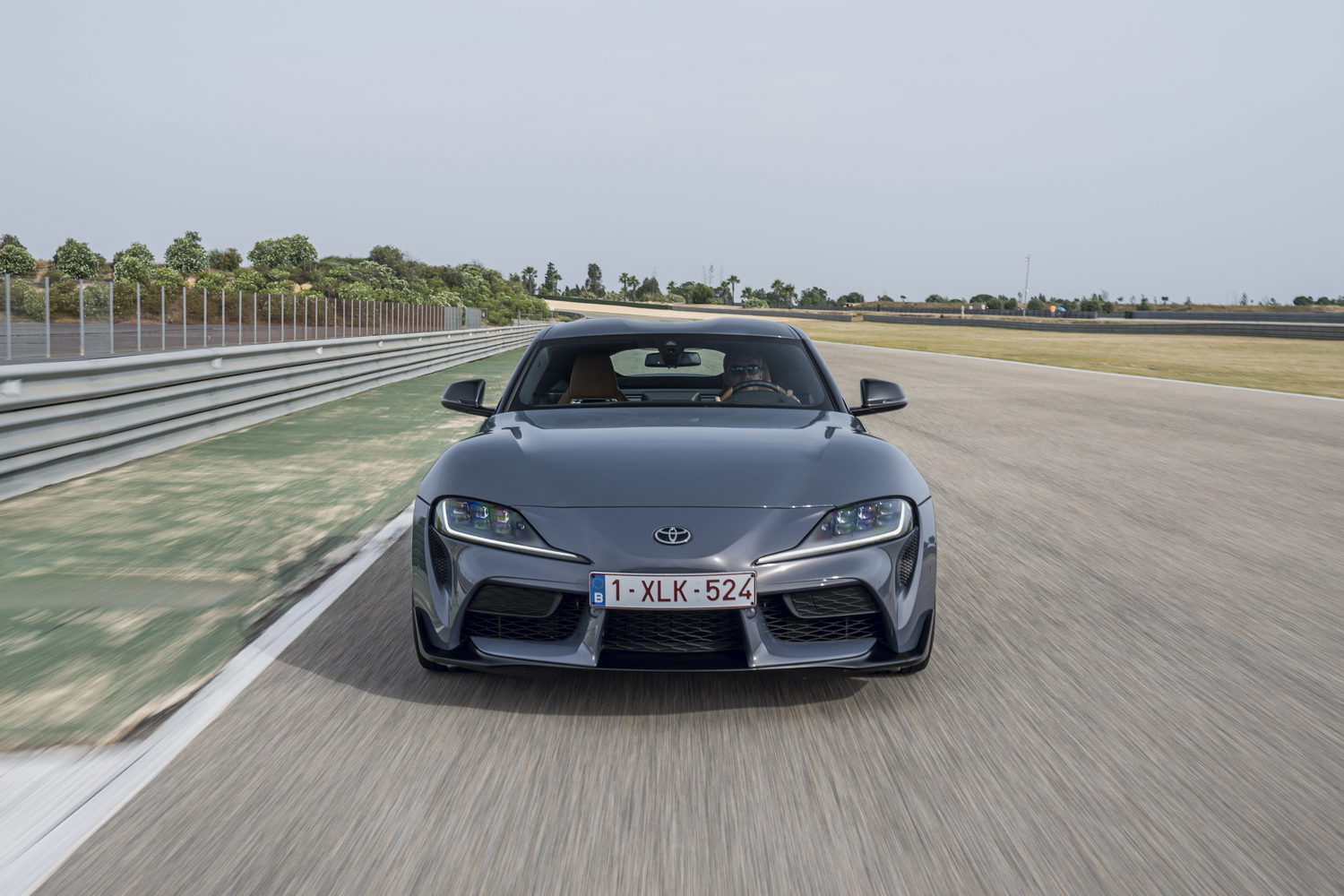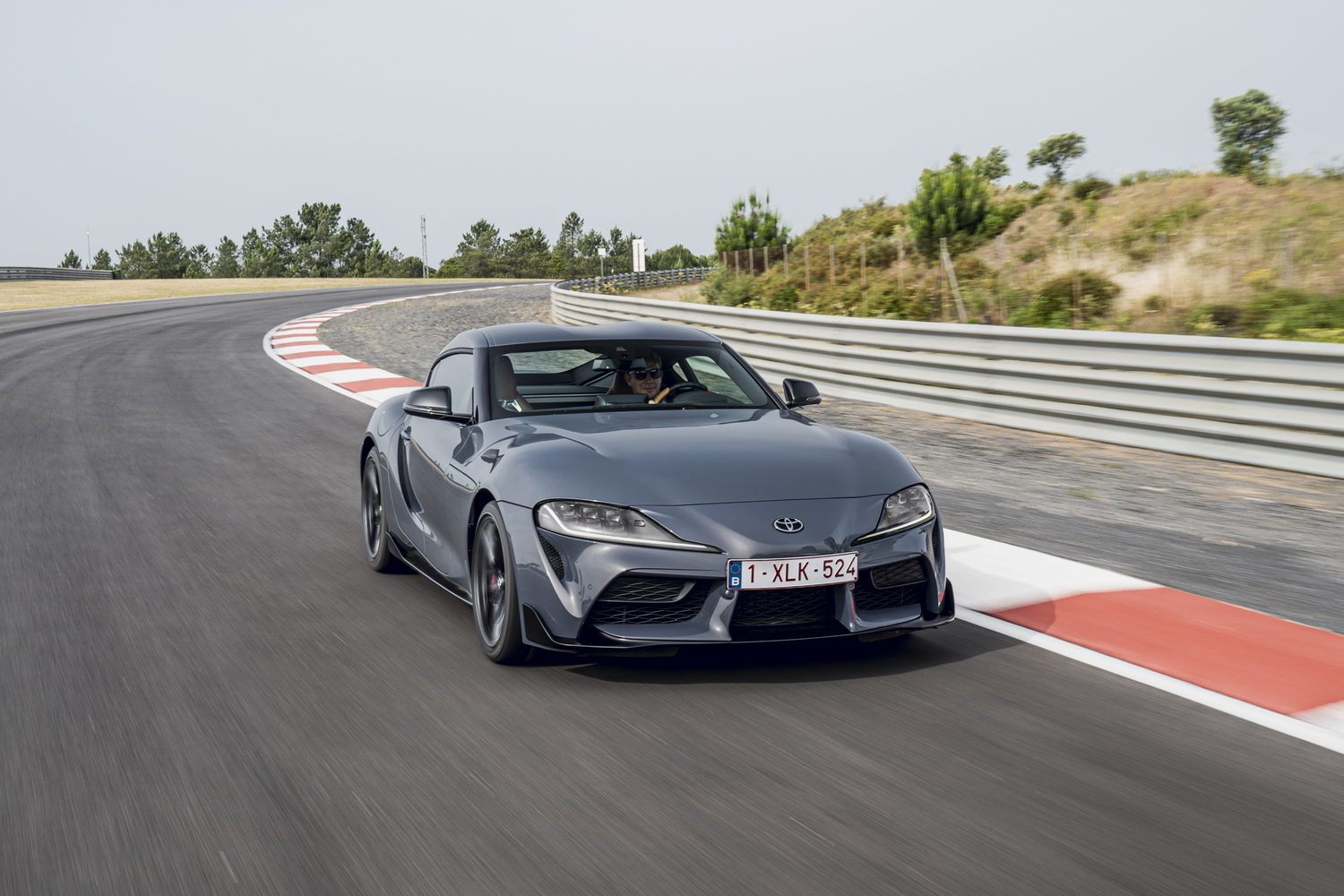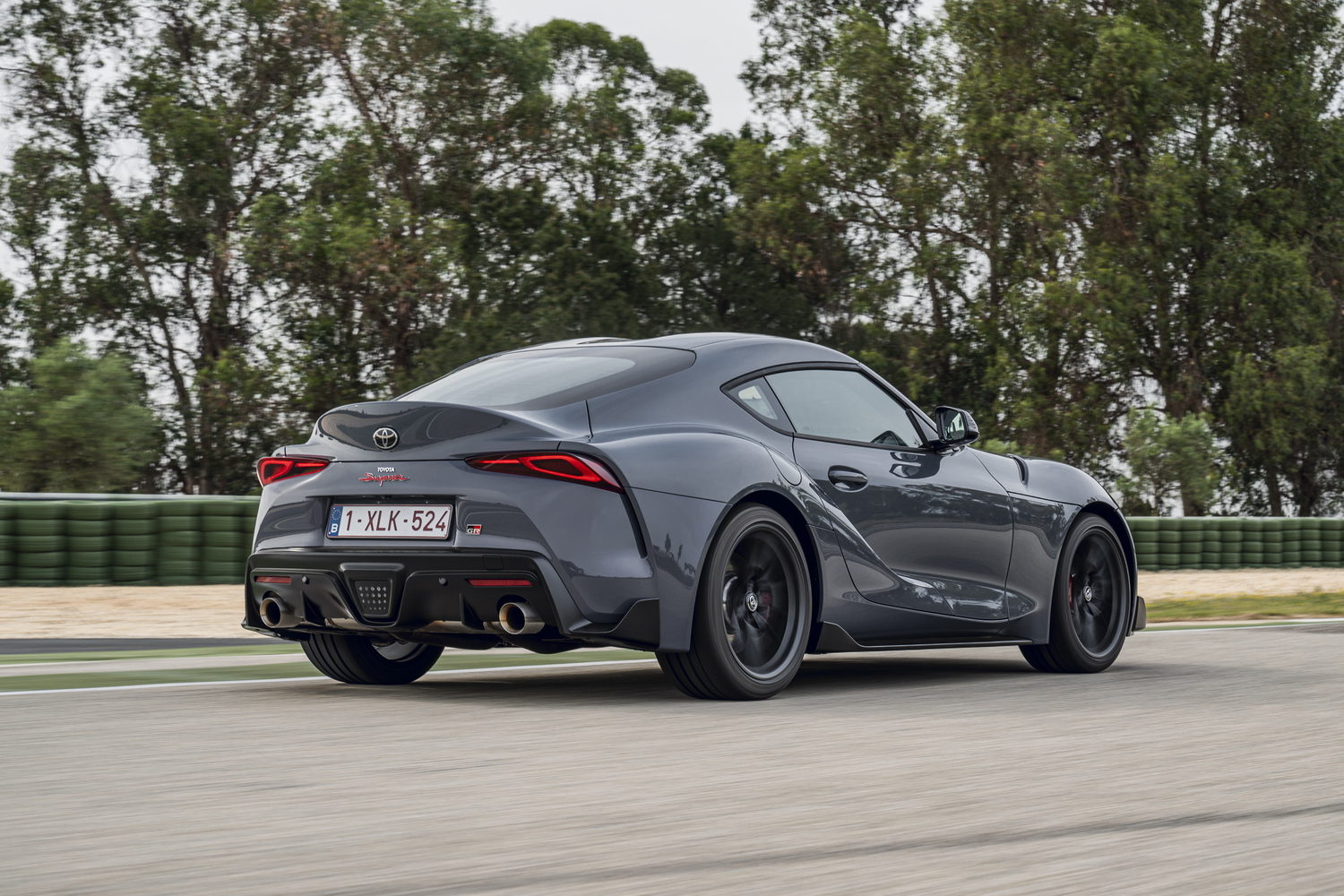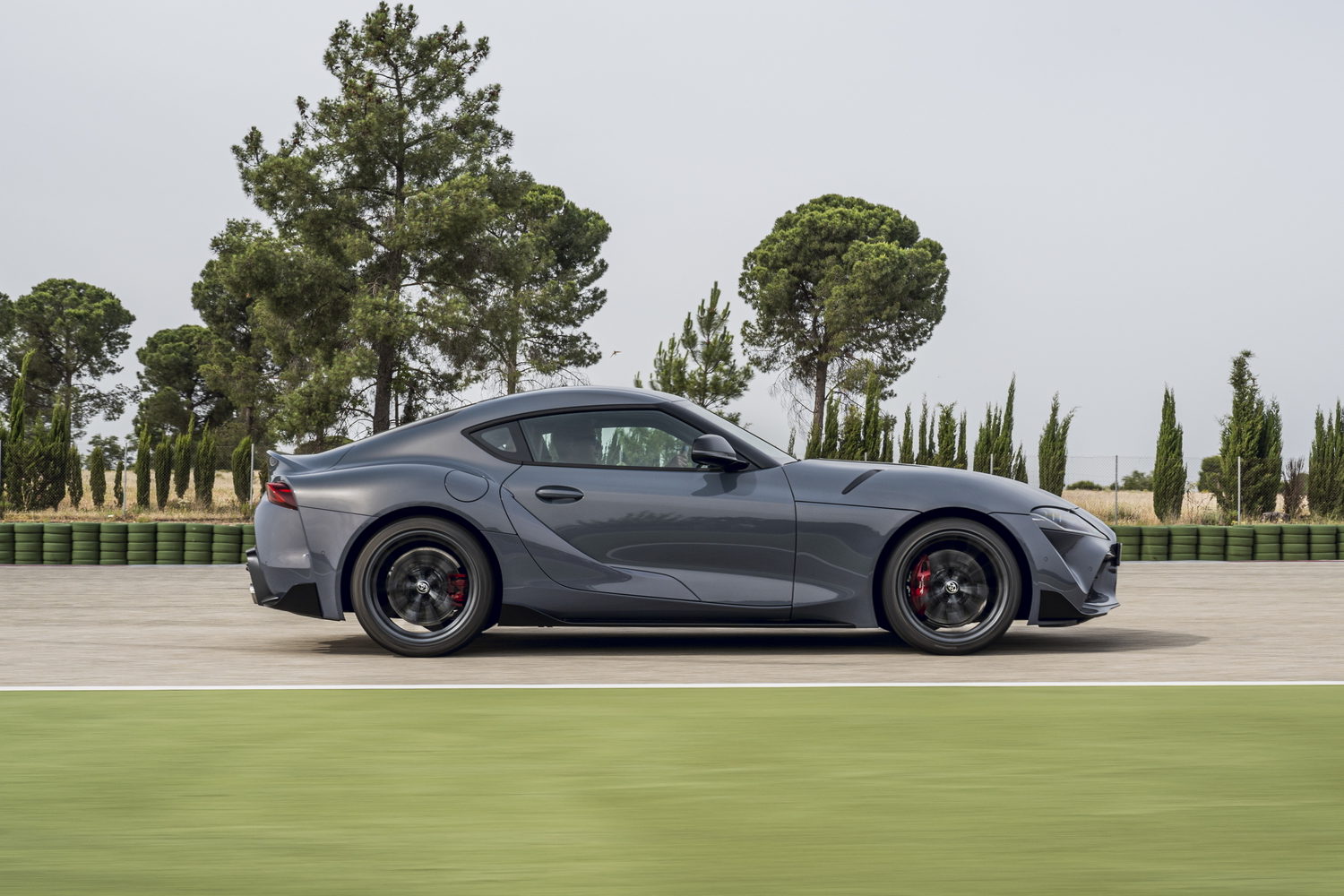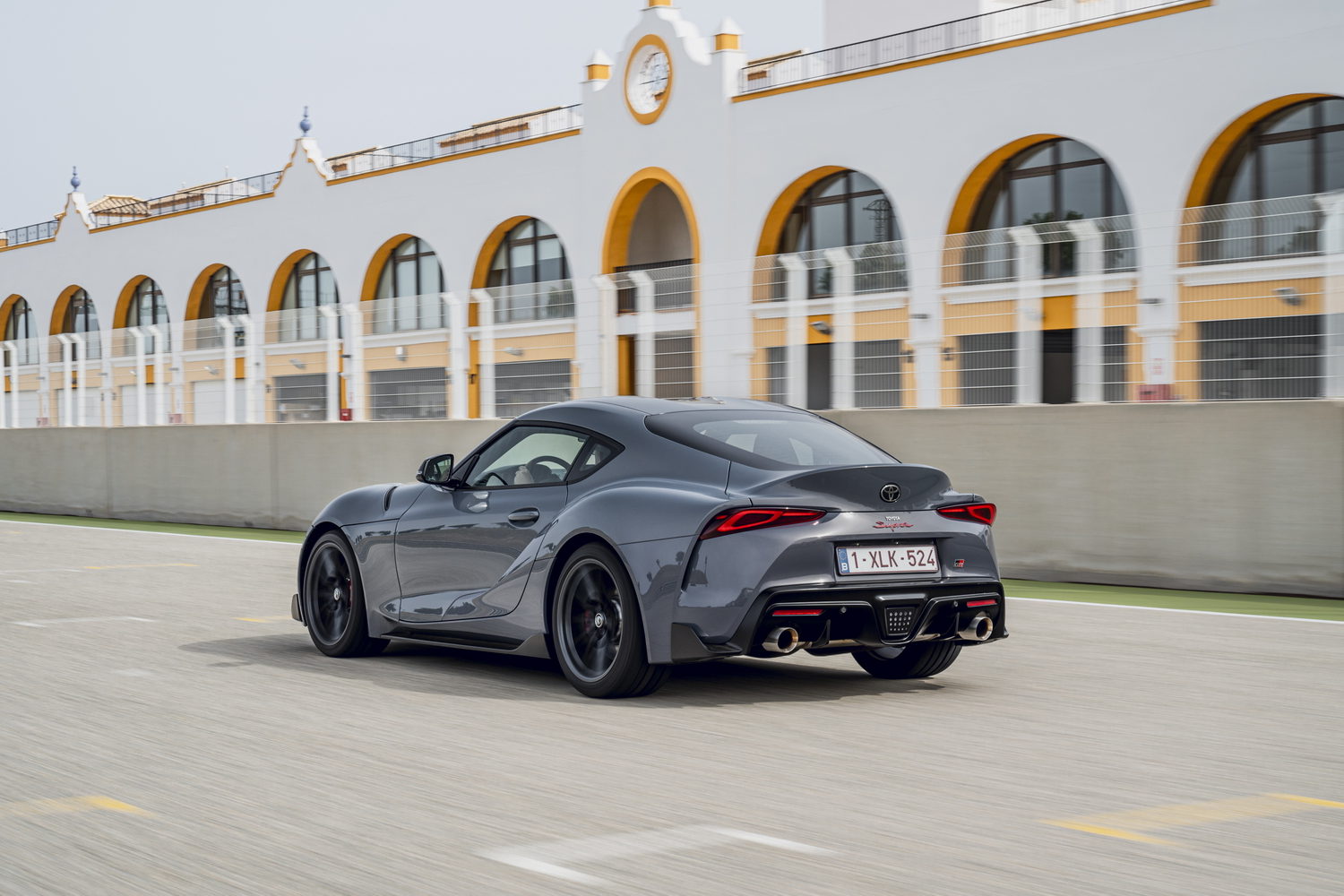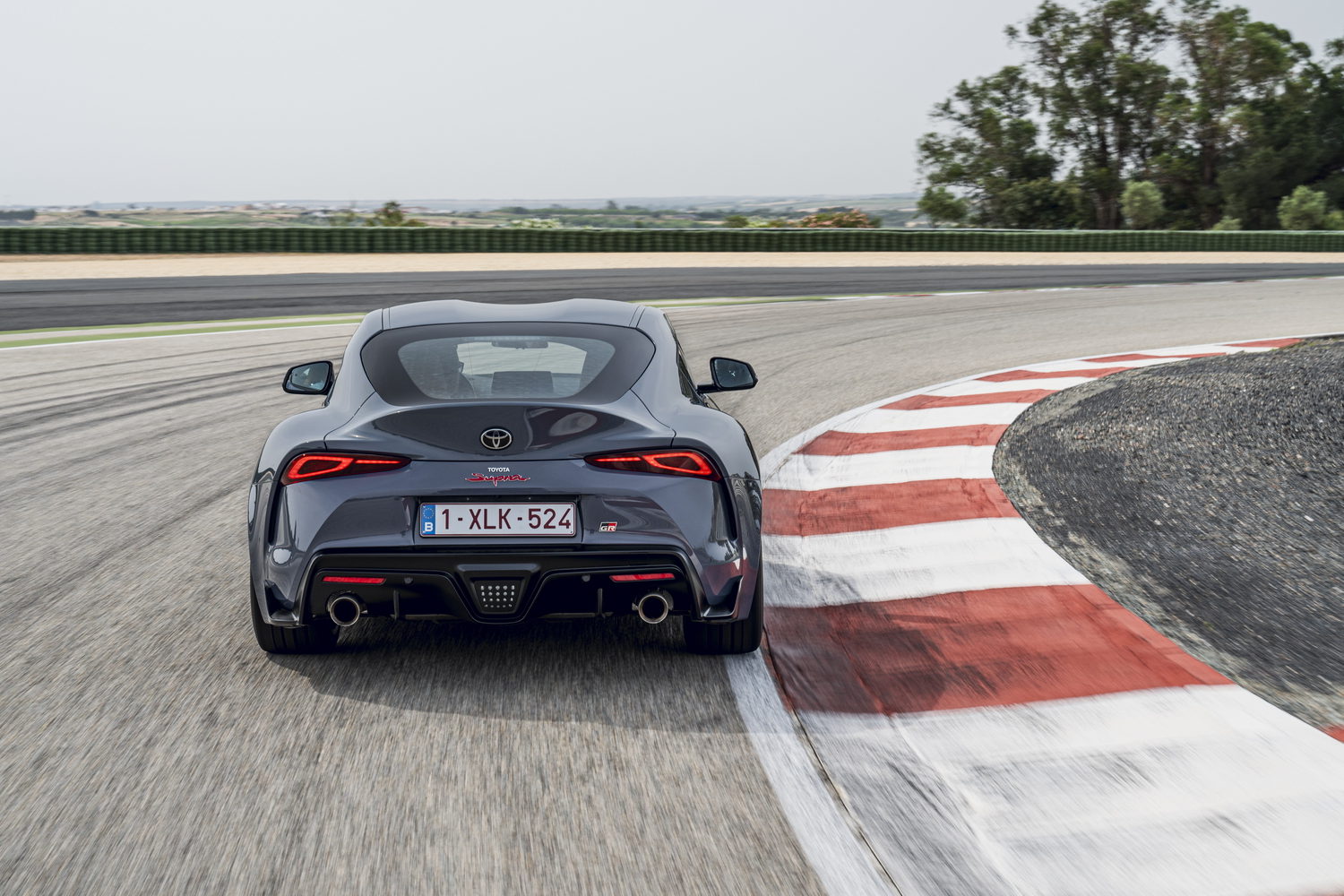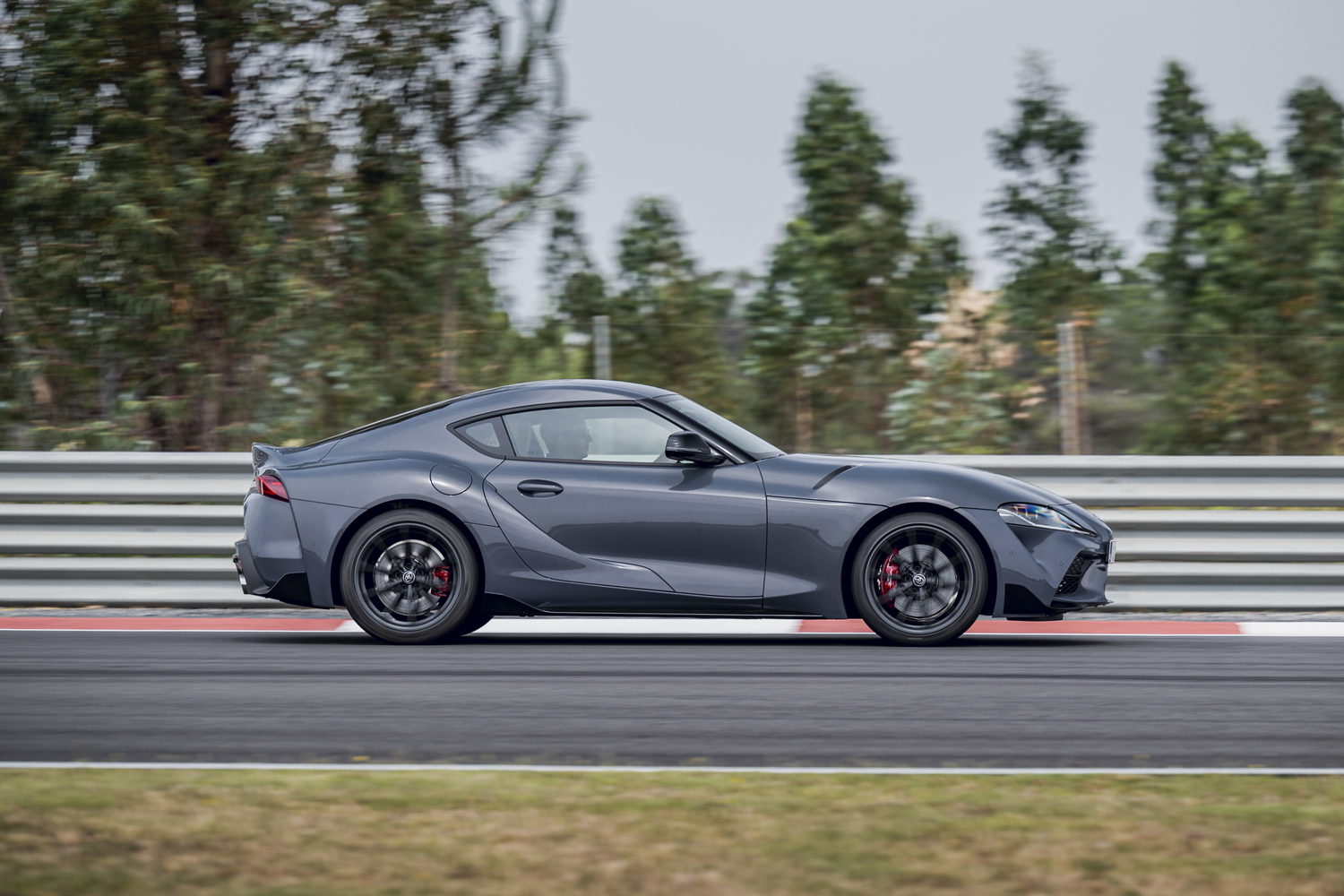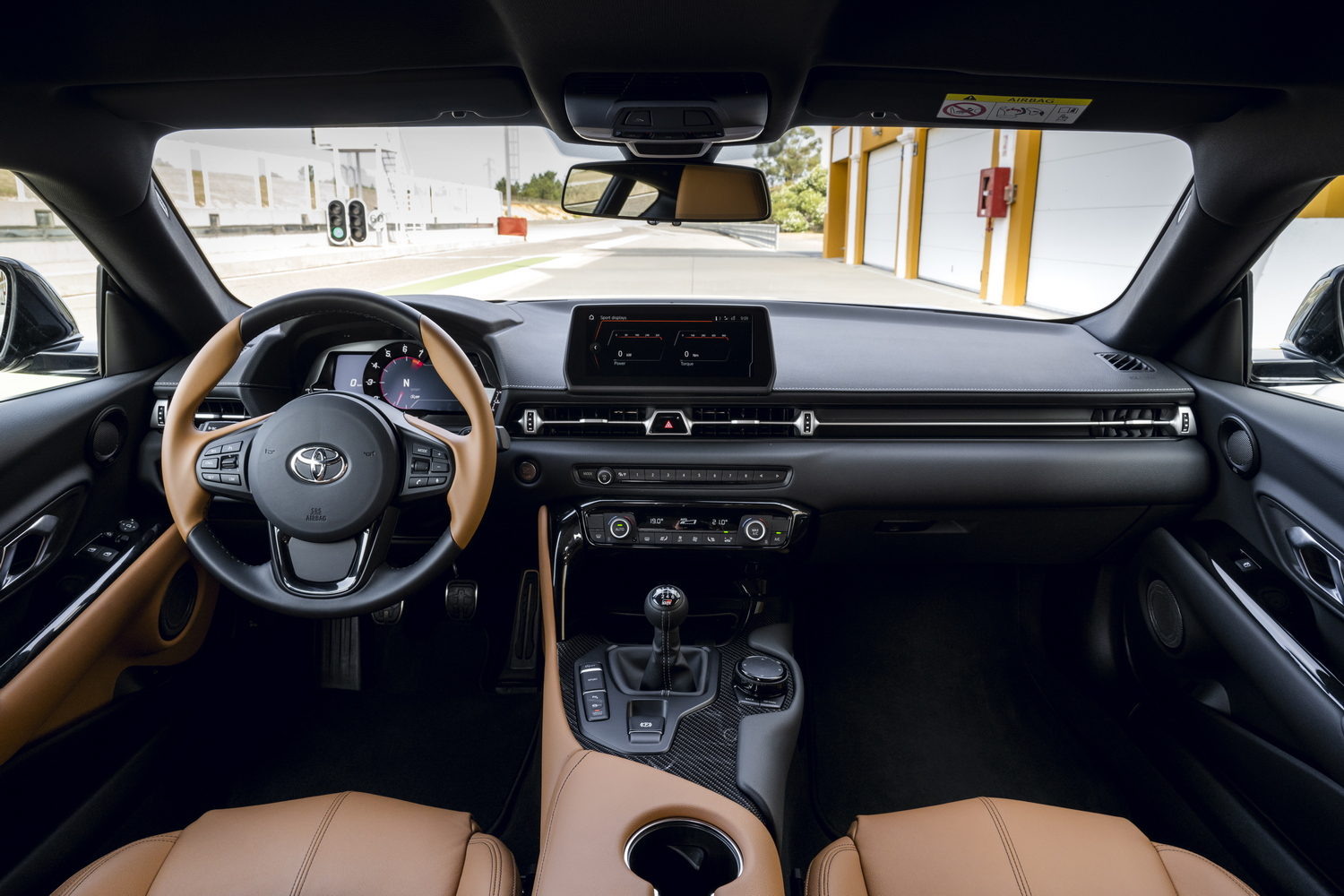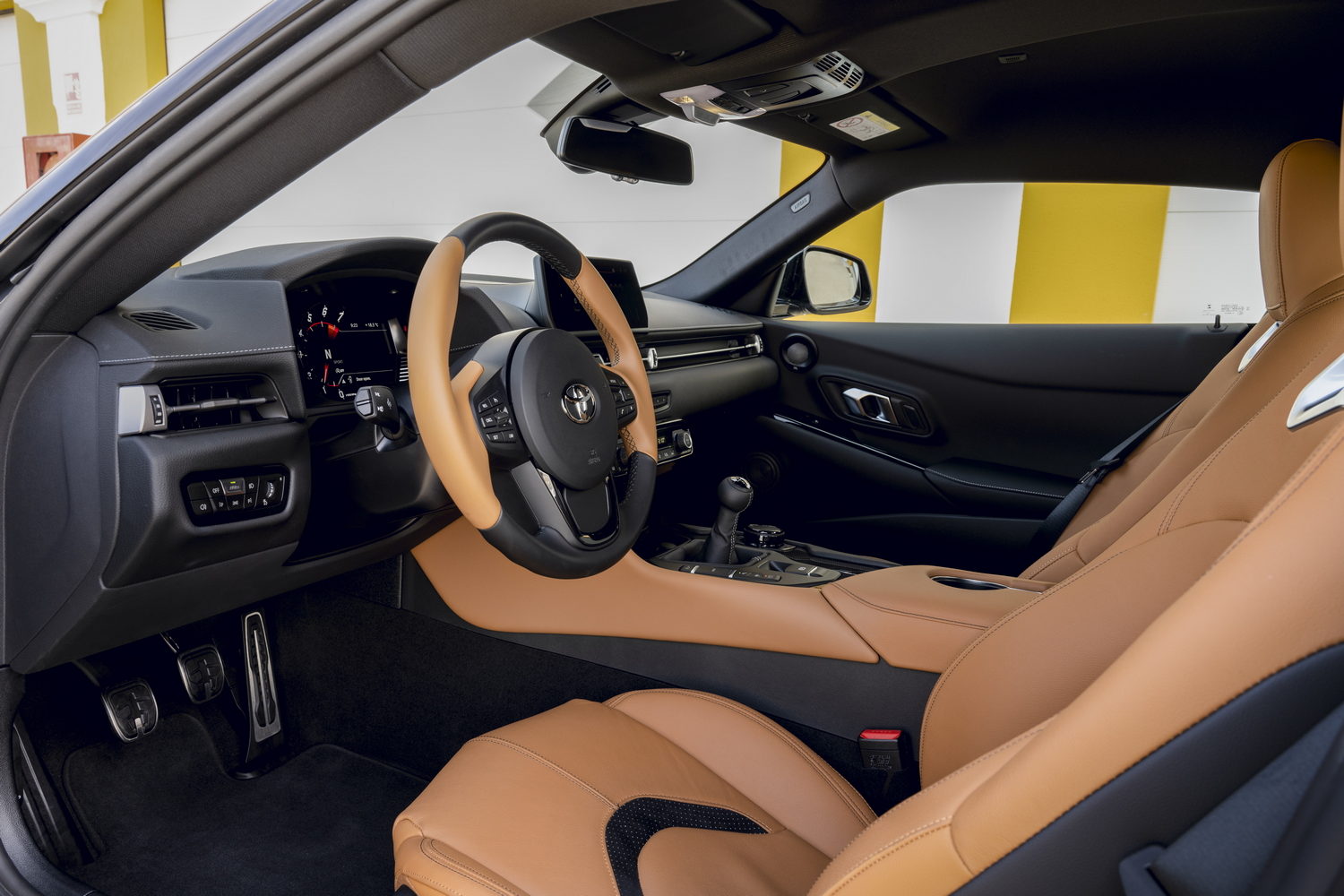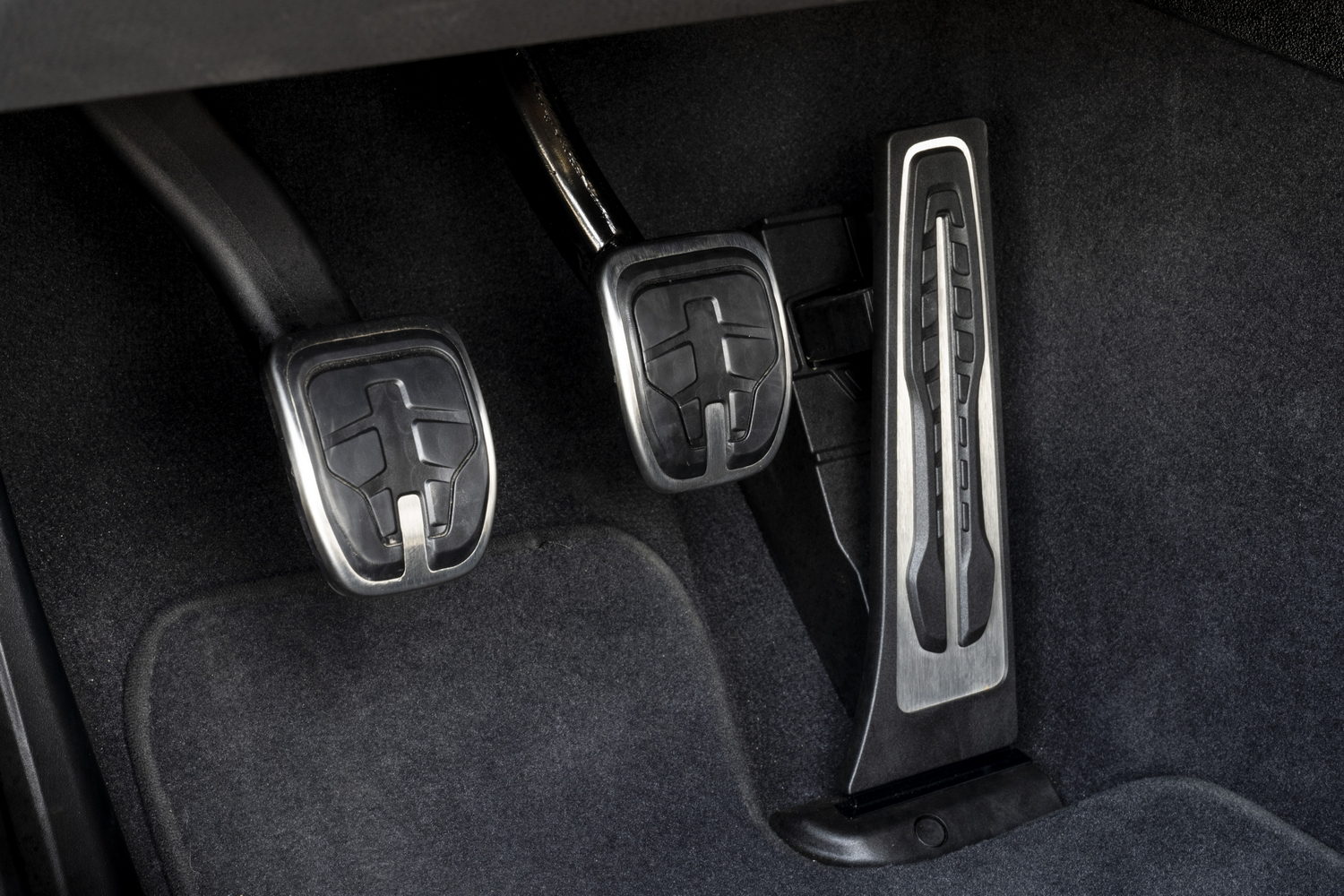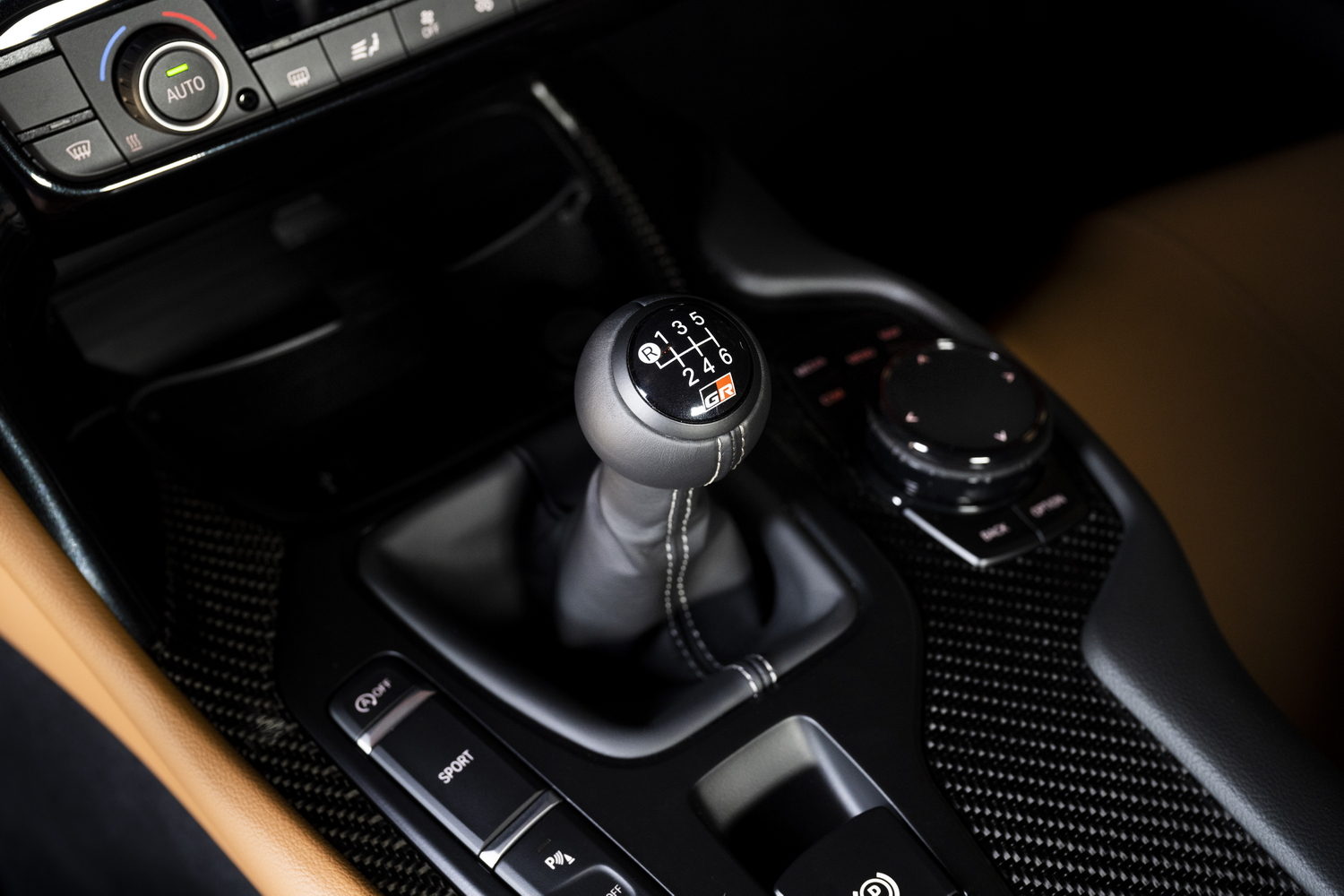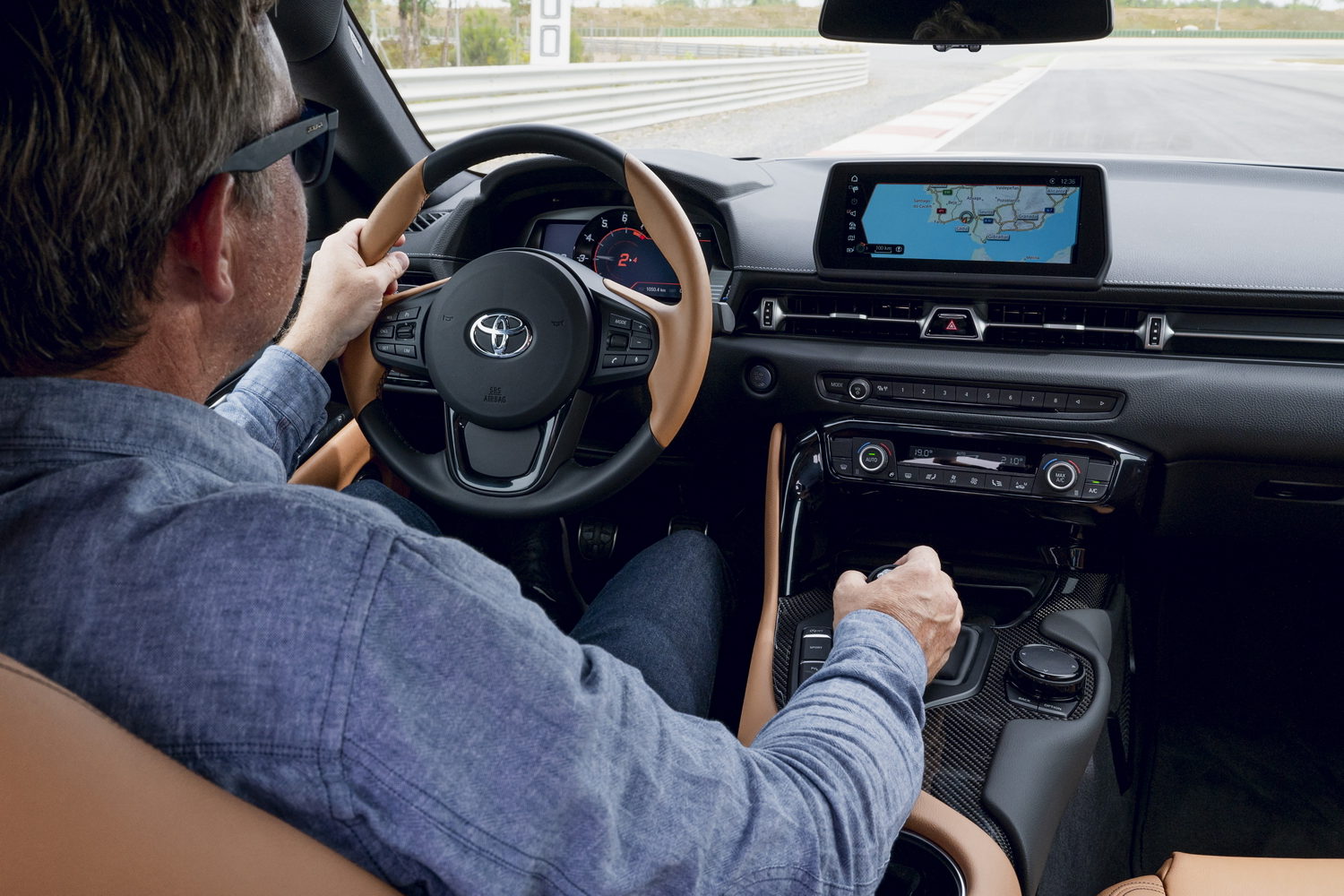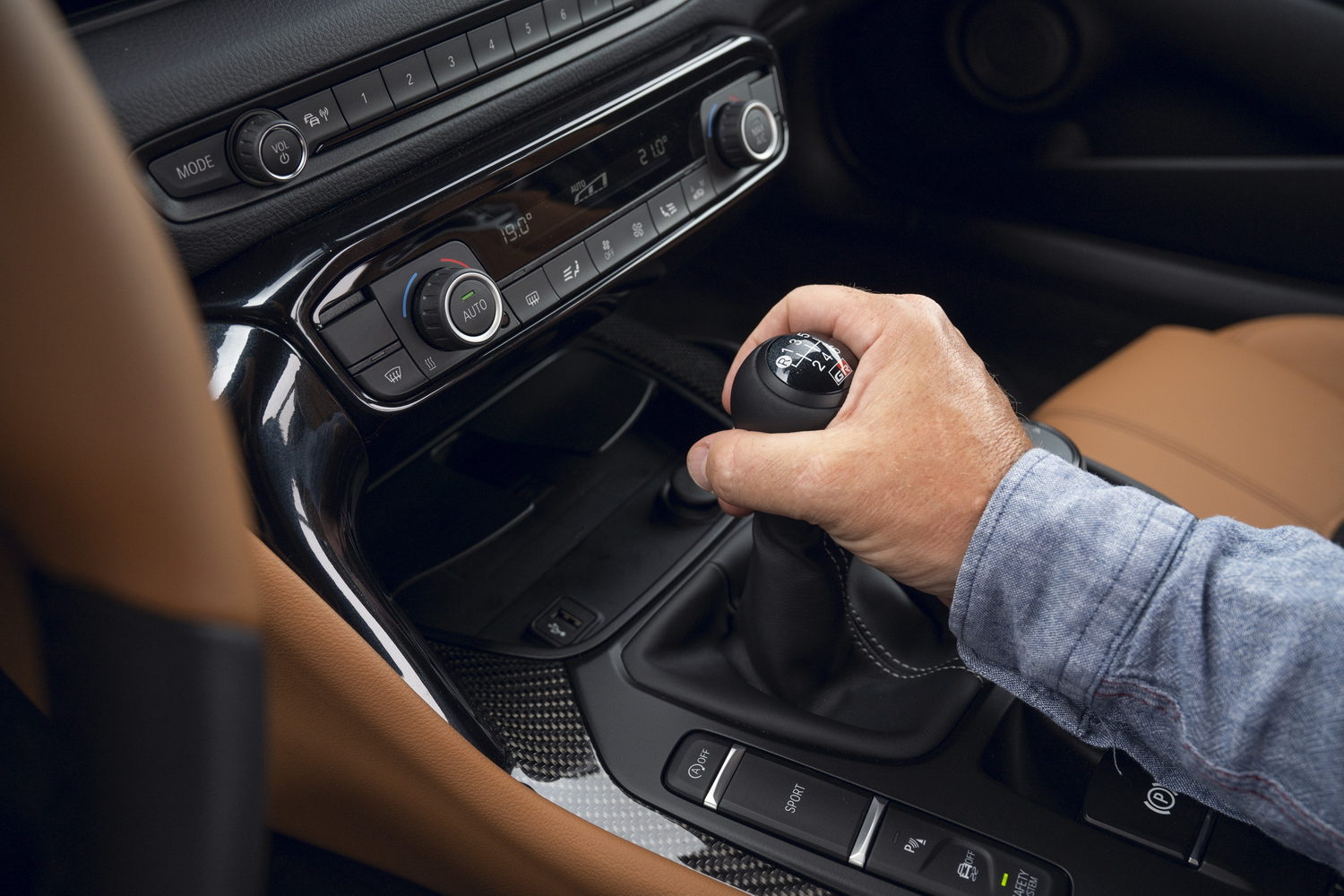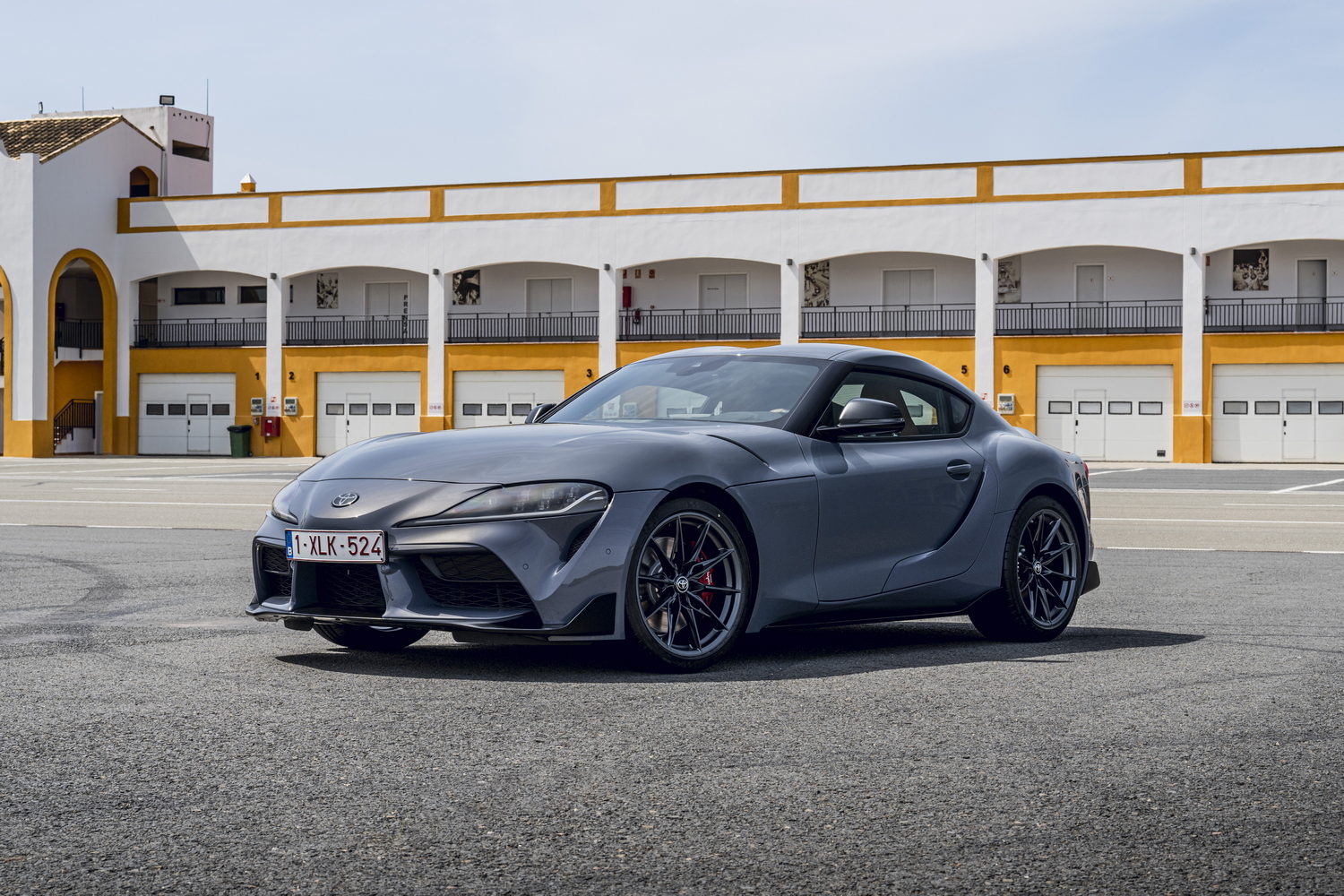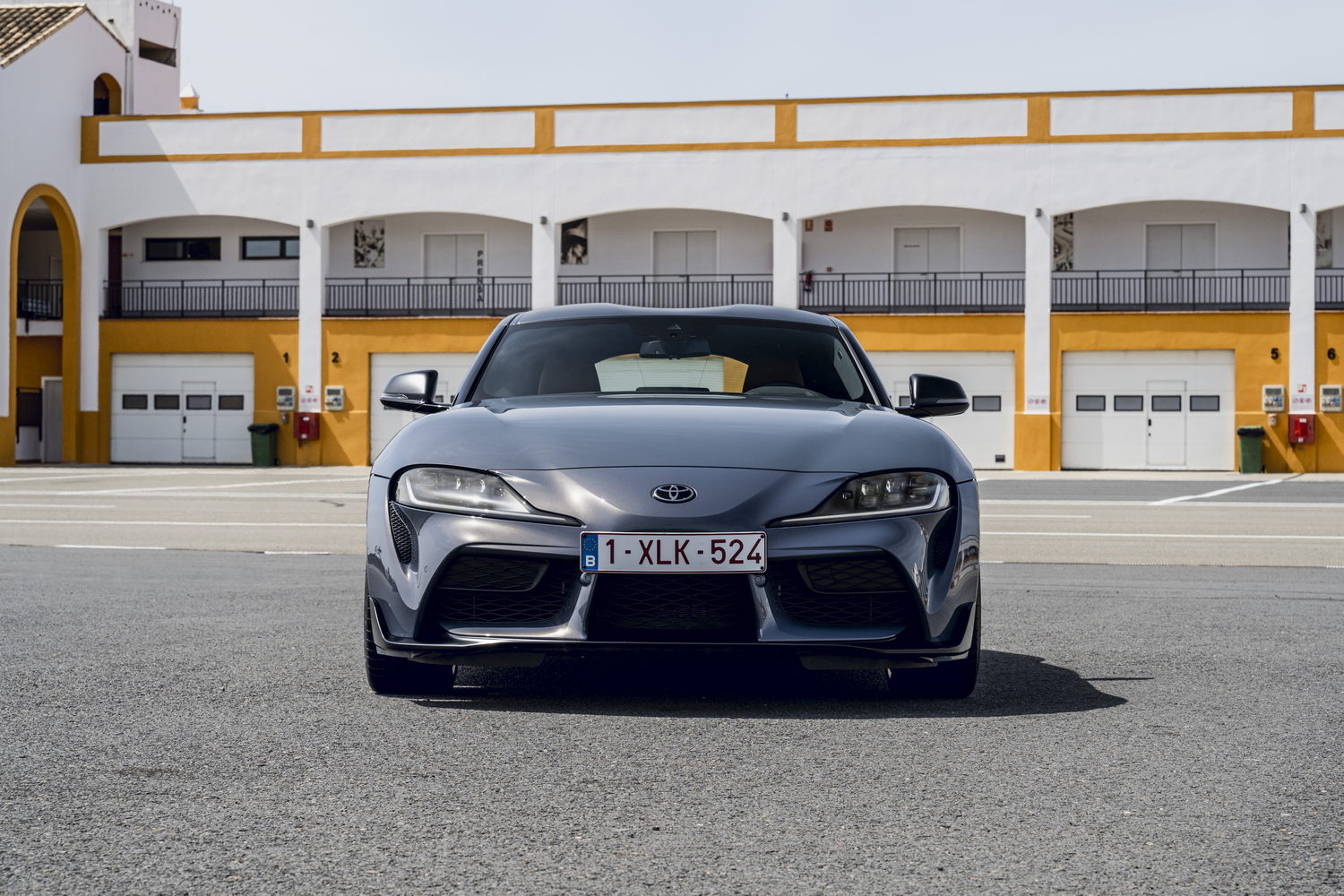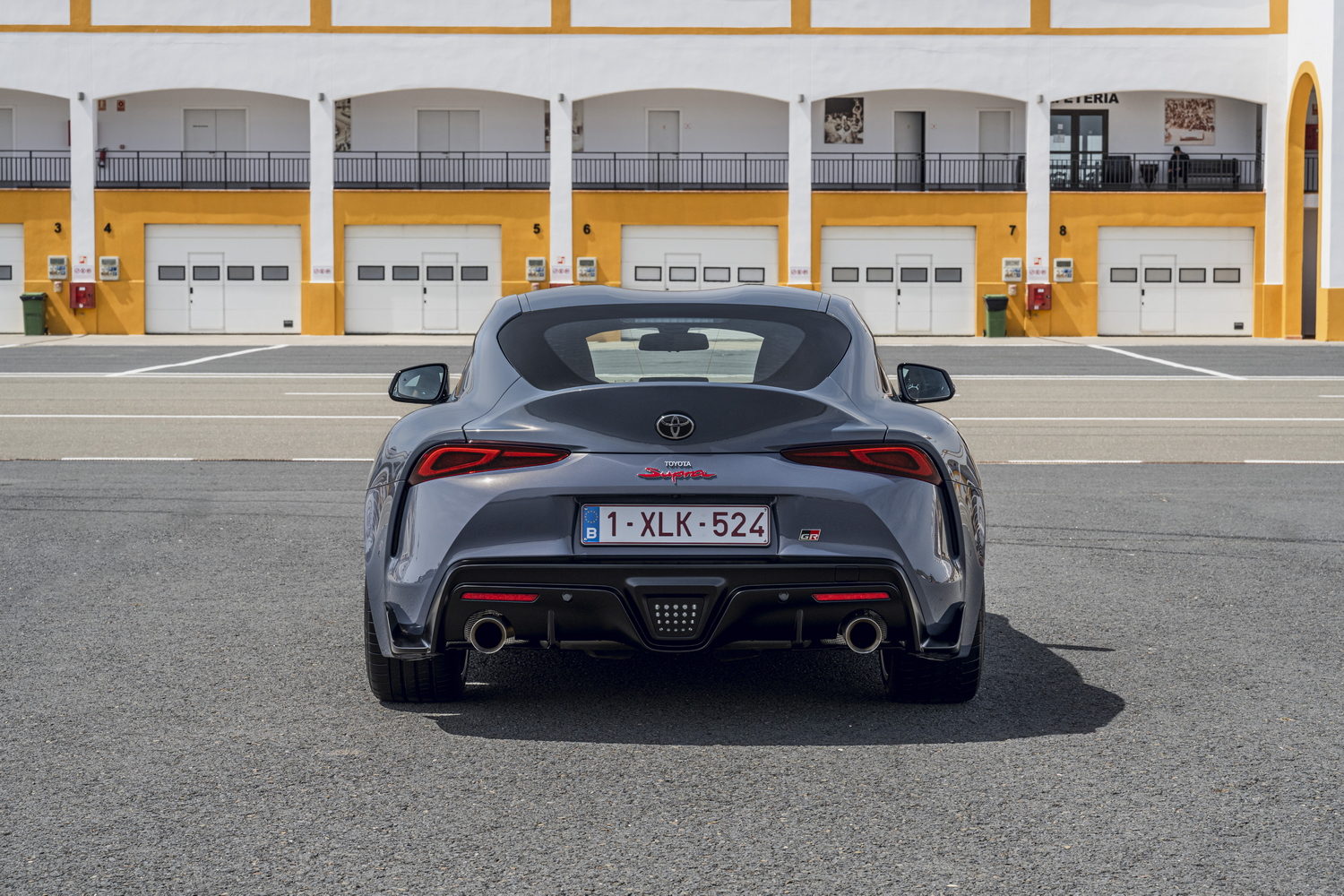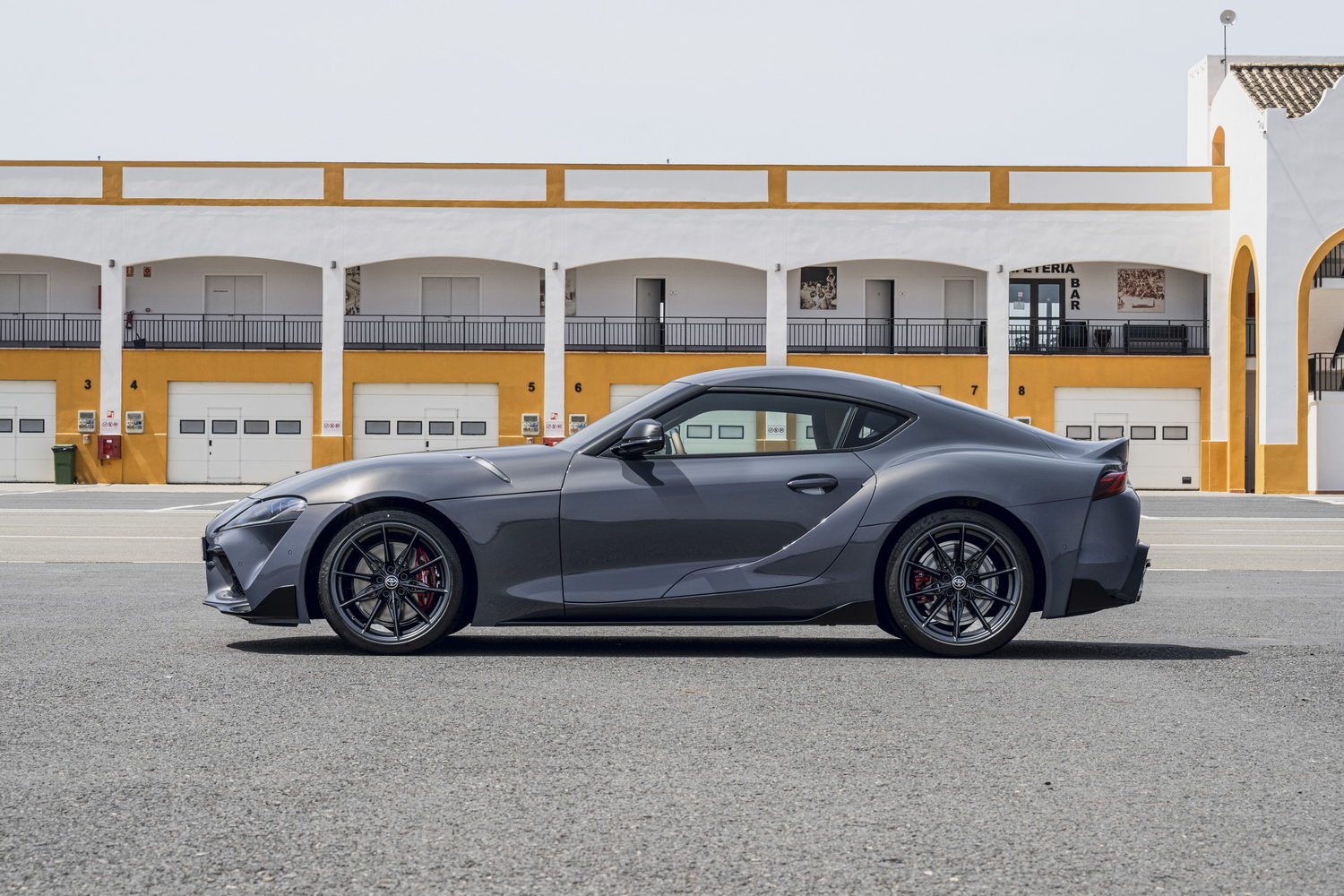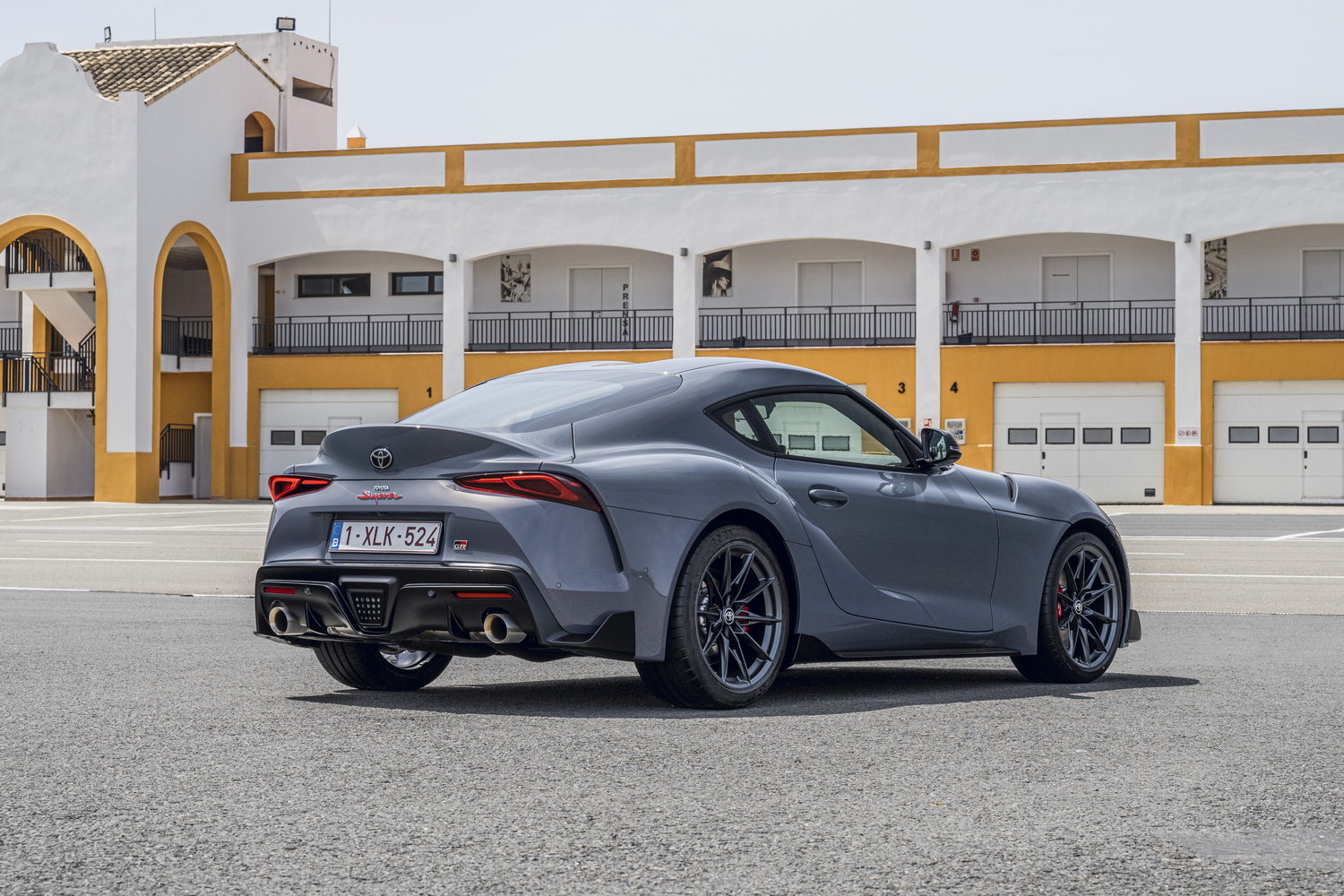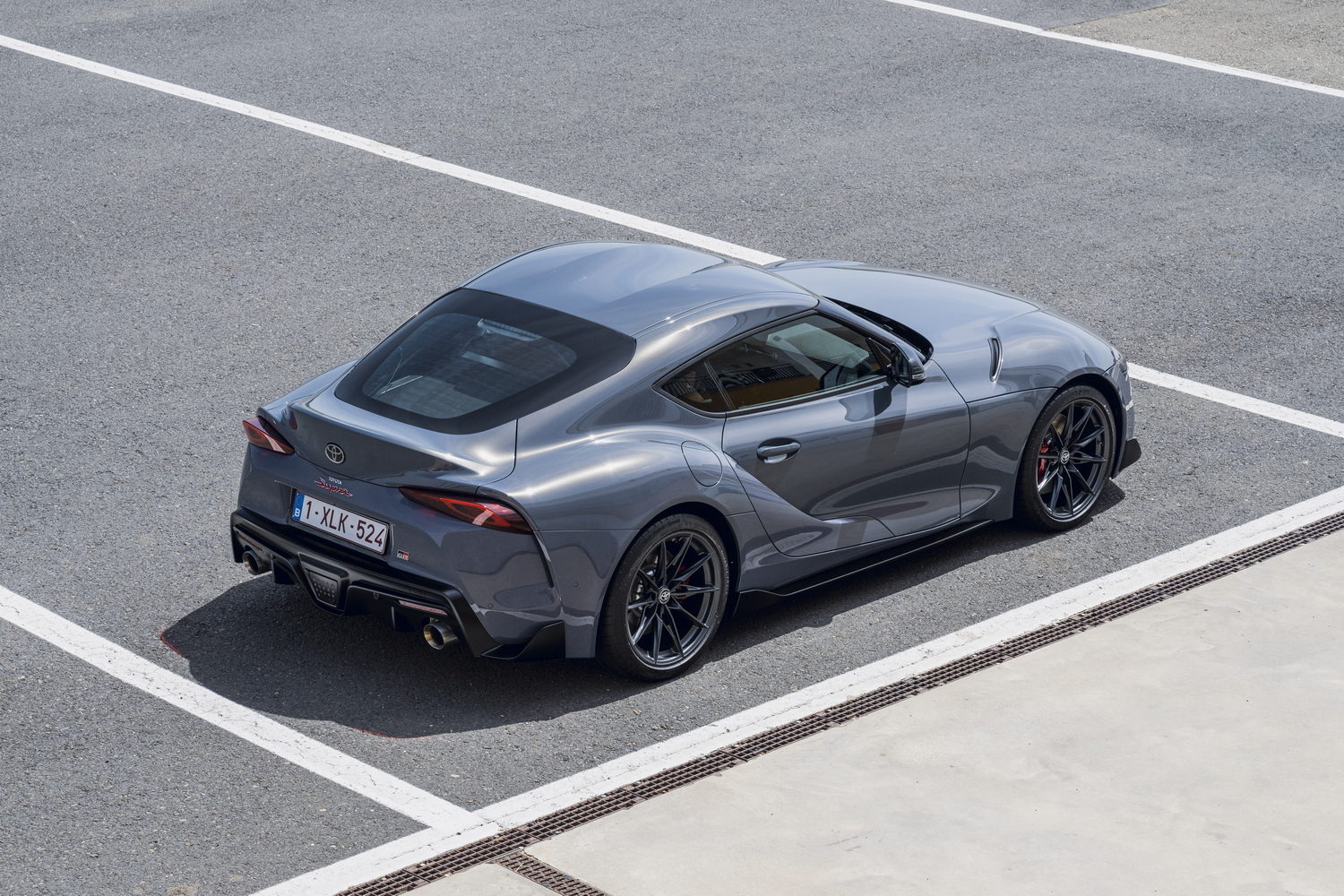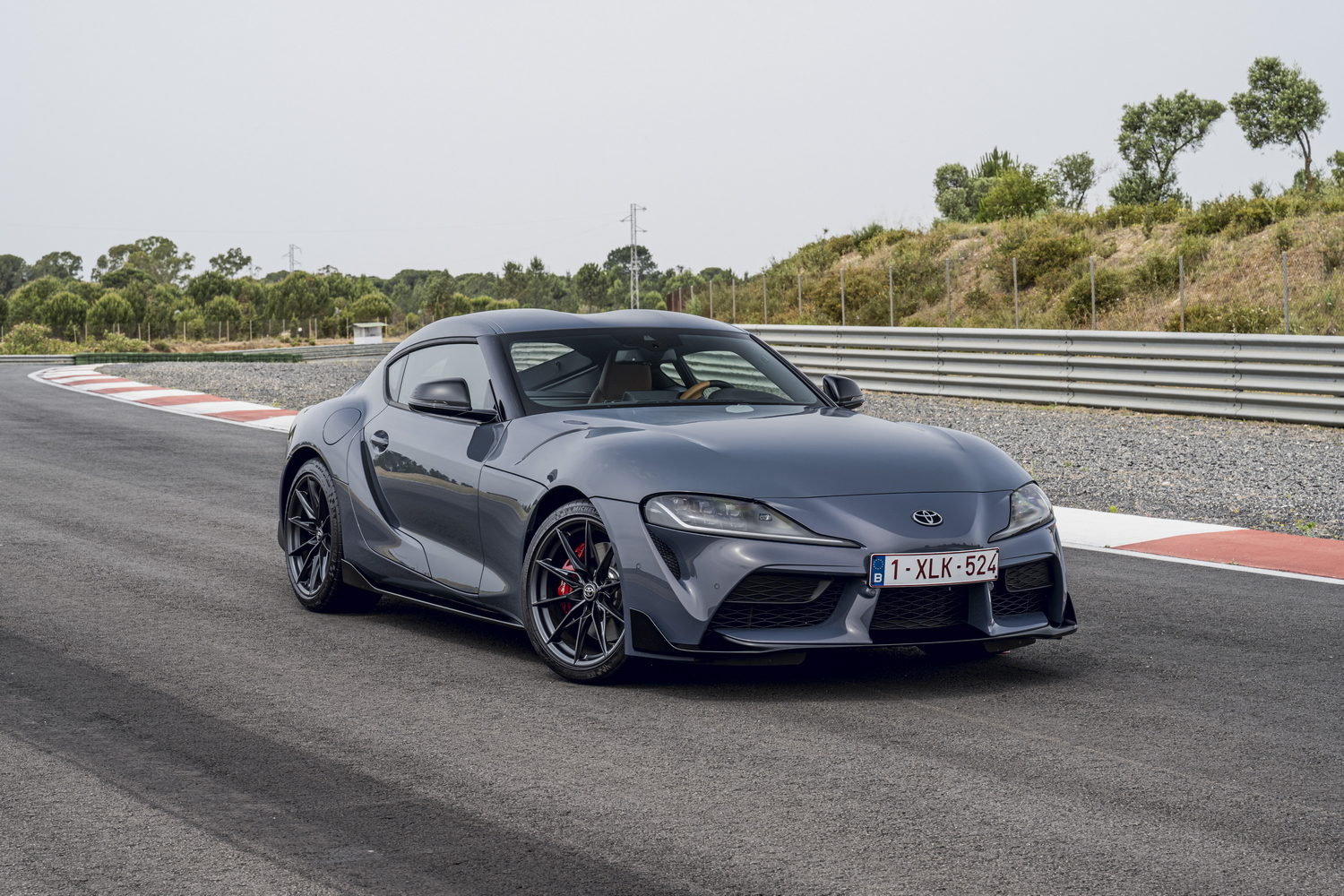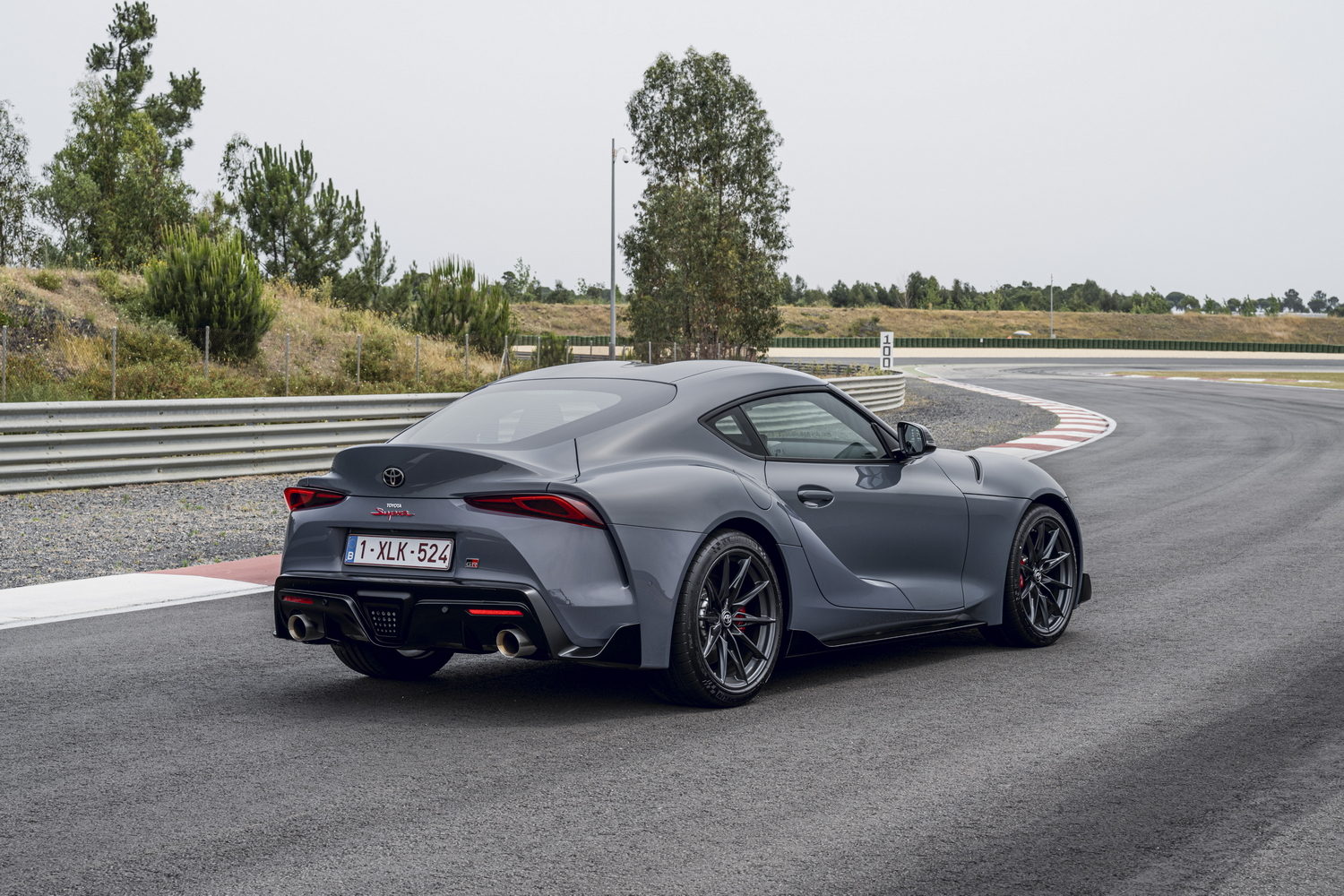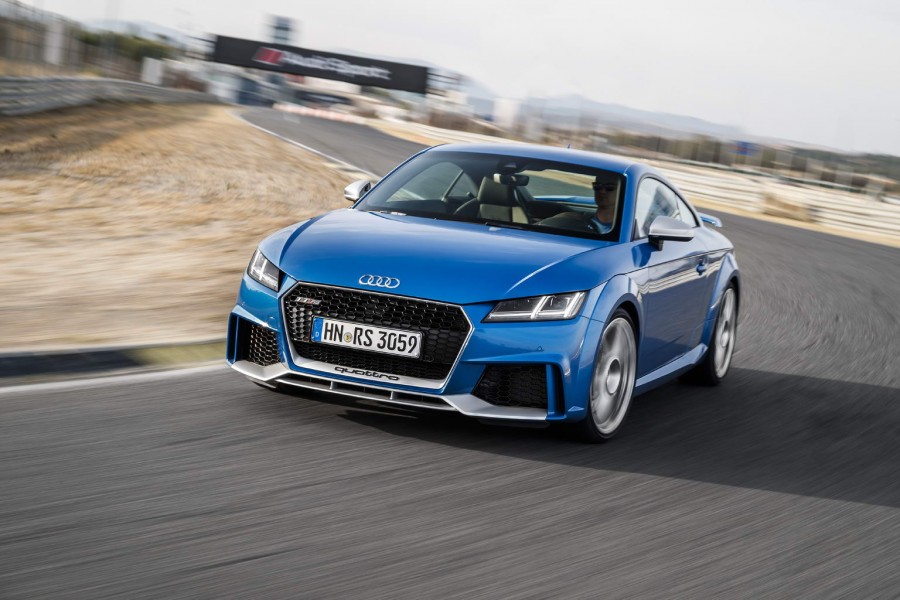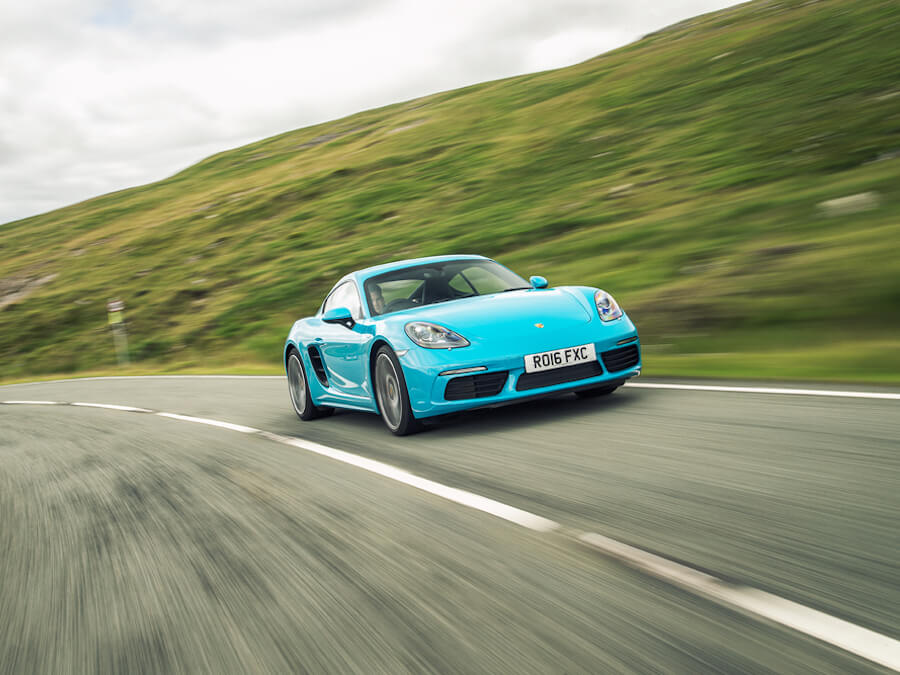The Supra returned to Toyota's line-up to great fanfare, and though it's still a cult hero for many, it hasn't hit the high notes in terms of sales. In a bid to boost its appeal, Toyota introduced a 2.0-litre petrol engine to supplement the 3.0-litre unit with which the car was launched (though not in Ireland). And now there's a manual option for that flagship 3.0-litre straight-six engine, intended to give the purists a little extra involvement. Has the ploy worked, or is the GR Supra better suited to the eight-speed automatic gearbox it has always had? And will Irish buyers even notice, as the new model won't officially be offered for sale here?
In the metal
From the outside, there's little to distinguish the manual Supra from any of its siblings. There are some new colours, most of which will also be available on other versions of the GR Supra anyway, and there's some red trim around the Supra badge. It works with some paint schemes, but others are less successful.
More has changed inside, where the centre console had to be redesigned to accommodate the manual shifter. Had it been left as it was, the driver's hand would bash the climate control system every time they selected first, third or fifth. The new gear selector also meant moving the control wheel for the infotainment system and adjusting the position of the electronic parking brake, as well as the drive mode buttons.
As a result, the centre console is now a bit wider and there's a kind of balcony there for the passenger to bash their knee against. But other than that, it's very much business as usual. The cabin still feels well-built and many of the controls will remain familiar to those who've driven a modern BMW. It isn't the most exciting place to sit, but it feels solid, and the material quality is generally very good.
Because it's much the same as before, it's also quite practical - considering it's a two-seat sports coupe. There's room for two tall adults and the boot holds 290 litres, which is only slightly less than you'd get in a Honda Jazz, for example. And because of the shape, it's even big enough to carry golf clubs.
If so little has changed inside and out, then what's all the fuss about? Well, although the design hasn't changed much, the mechanical components have. For a kick-off, there's a new six-speed manual gearbox custom-made from a mishmash of parts supplied by German transmission firm ZF. Then Toyota had to change the traction control system to deal with the new driveline, and it made a selection of changes to the steering, brakes and suspension - changes that have cascaded down the Supra range and can also be found on the automatic models from now on.
Driving it
Our early drive of the manual Supra took place in the confines of a racetrack, so it's difficult to draw too many conclusions about Toyota's changes to the suspension. We can, however, evaluate the modifications to the steering and traction control systems, as well as the new six-speed manual gearbox, which is a roaring success.
The changes are smooth and snappy, and the "intelligent" manual transmission (iMT) has a throttle blip system to help drivers get their shifts just right. The on-board computer matches the engine revs to the road speed for you, allowing for smoother transitions between each ratio. But if you're experienced and/or confident in your abilities, you can always switch it off and do it the old-fashioned way.
For those confident with that, it's something we'd recommend, because the manual gearbox is all about driver involvement. It isn't here to improve lap times or make the car faster (the Supra will do 0-100km/h in 4.6 seconds with the iMT, compared with 4.3 seconds in the automatic, for example), it's here to make the driver feel like an organic part of the machine. And it does that brilliantly.
You get to choose how hard you push that glorious 3.0-litre, BMW-sourced straight-six, and you can choose when you hear that motor bark during a downshift. Yes, shift paddles allow you to do a similar thing in the automatic, but the manual gearbox makes you feel as though it was all your doing. Even if the iMT system was helping you out.
And that isn't the only function that's helping out. There's also a tweaked traction control system that's designed to reduce wheelspin when pulling out of junctions, but increases the amount allowed when climbing hills. The idea being that there's less interference from the traction control on tight, uphill hairpin bends, such as those found on Alpine roads.
The result of all this is a GR Supra that's more challenging and more entertaining to drive. For many, the big GT feel suits an automatic gearbox, and we'd probably stick with the auto were it our money, but the manual gearbox makes the Supra a bit more exciting and interesting on a good back road. Choosing between the two will be a matter of personal preference.
As for the other changes, it's hard to judge too much from a silky-smooth racetrack, but the tweaks to the suspension and steering don't seem to have made a massive difference to the Supra's basic character. It's still a big GT car, rather than an out-and-out sports coupe, so it feels a little softer than, say, a Porsche 718 Cayman. There's a little bit of body roll, but there's plenty of grip and it corners very sweetly until you really start pushing.
The car still feels quite heavy, despite the lighter gearbox, so getting it wrong means the back end can step out of line quite suddenly, although the revamped traction control system will generally get it back in line with equal alacrity. Dial the traction control back, however, and the car becomes more of a brute, requiring a bit more concentration and sharp reactions to keep it on the straight and narrow. Still, that's only an issue on a racetrack, and few drivers should ever get near the limits of their Supra on the public road.
What you get for your money
As mentioned, only the 3.0-litre version of the GR Supra is available on these shores, starting at at €95,960 for the basic model and rising to €99,415 for the Premium version. Signs are that Irish buyers won't be offered the manual gearbox at all.
Summary
Toyota expects the manual GR Supra to be a hit with customers in most parts of the world, and we can see why. Yes, the automatic gearbox suits the Supra's GT credentials, but the manual transmission adds another string to the Toyota's bow, making it more involving and more rewarding to drive. Yet because the stick-shift gearbox doesn't make the Supra much harder to drive, it's still a great grand tourer.

